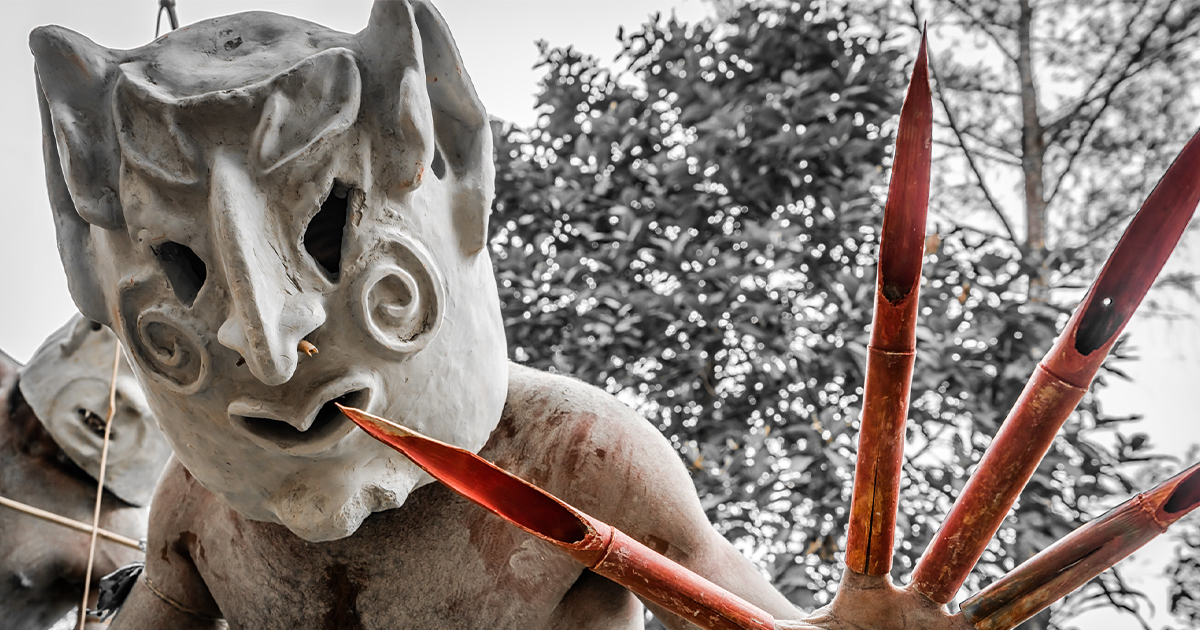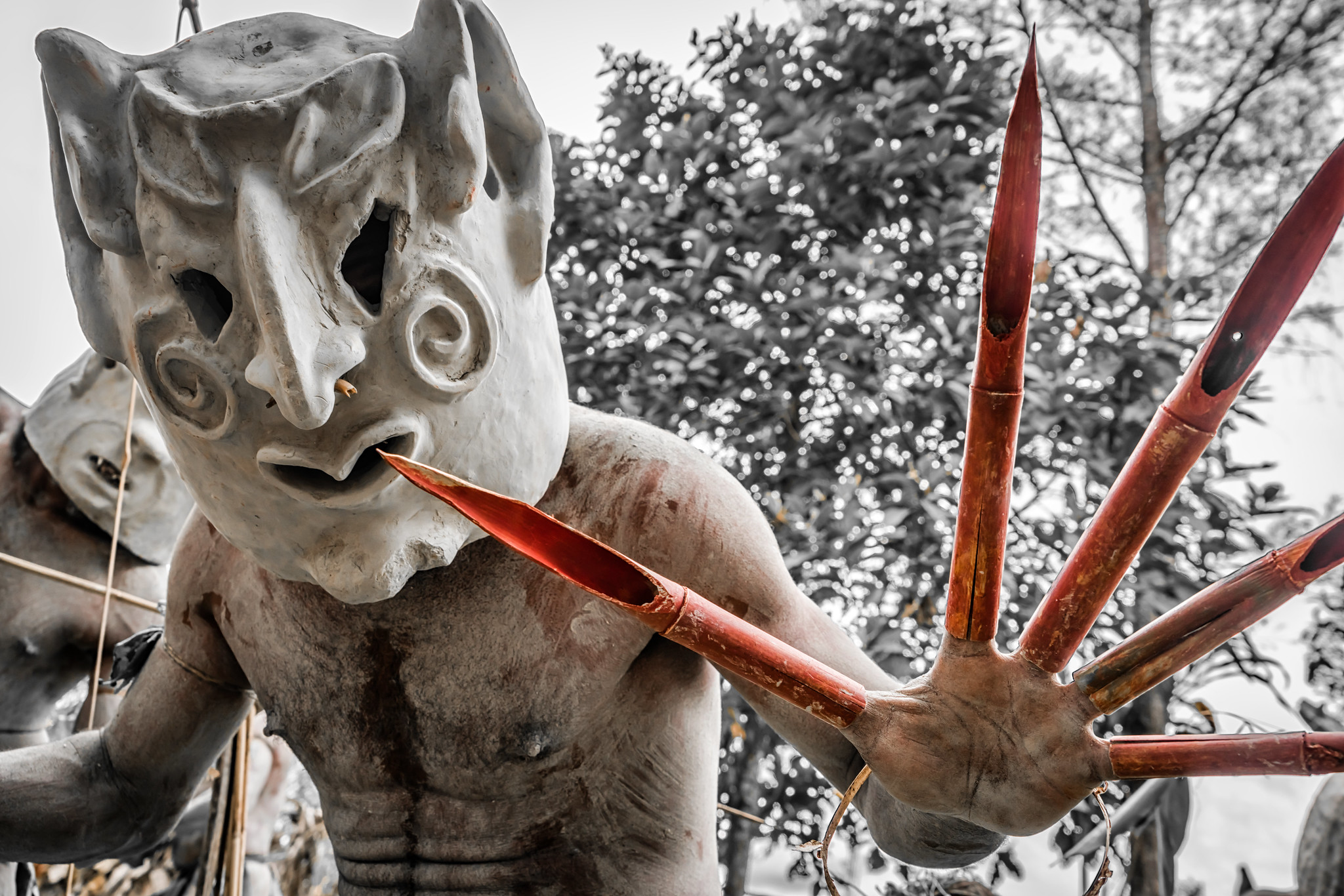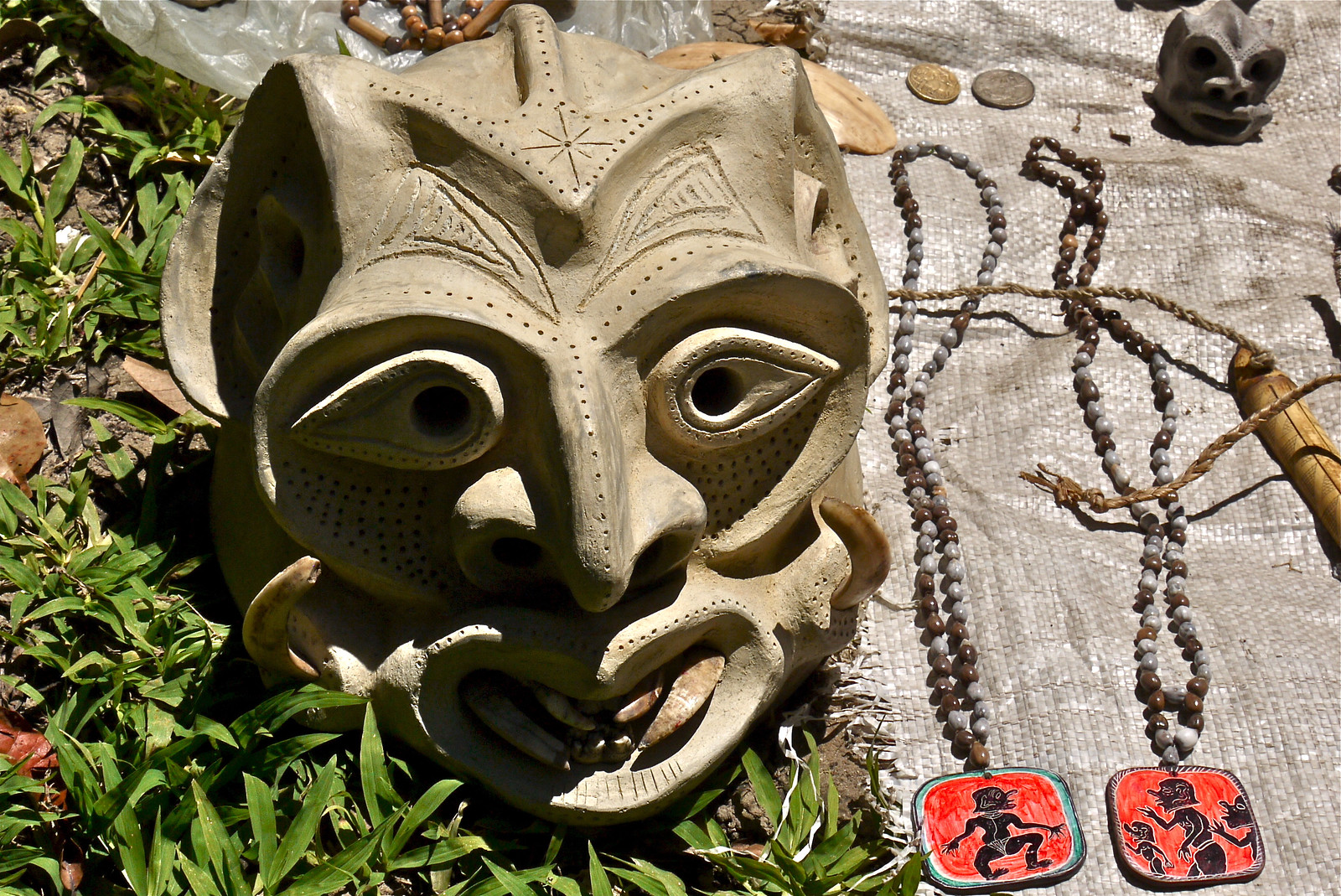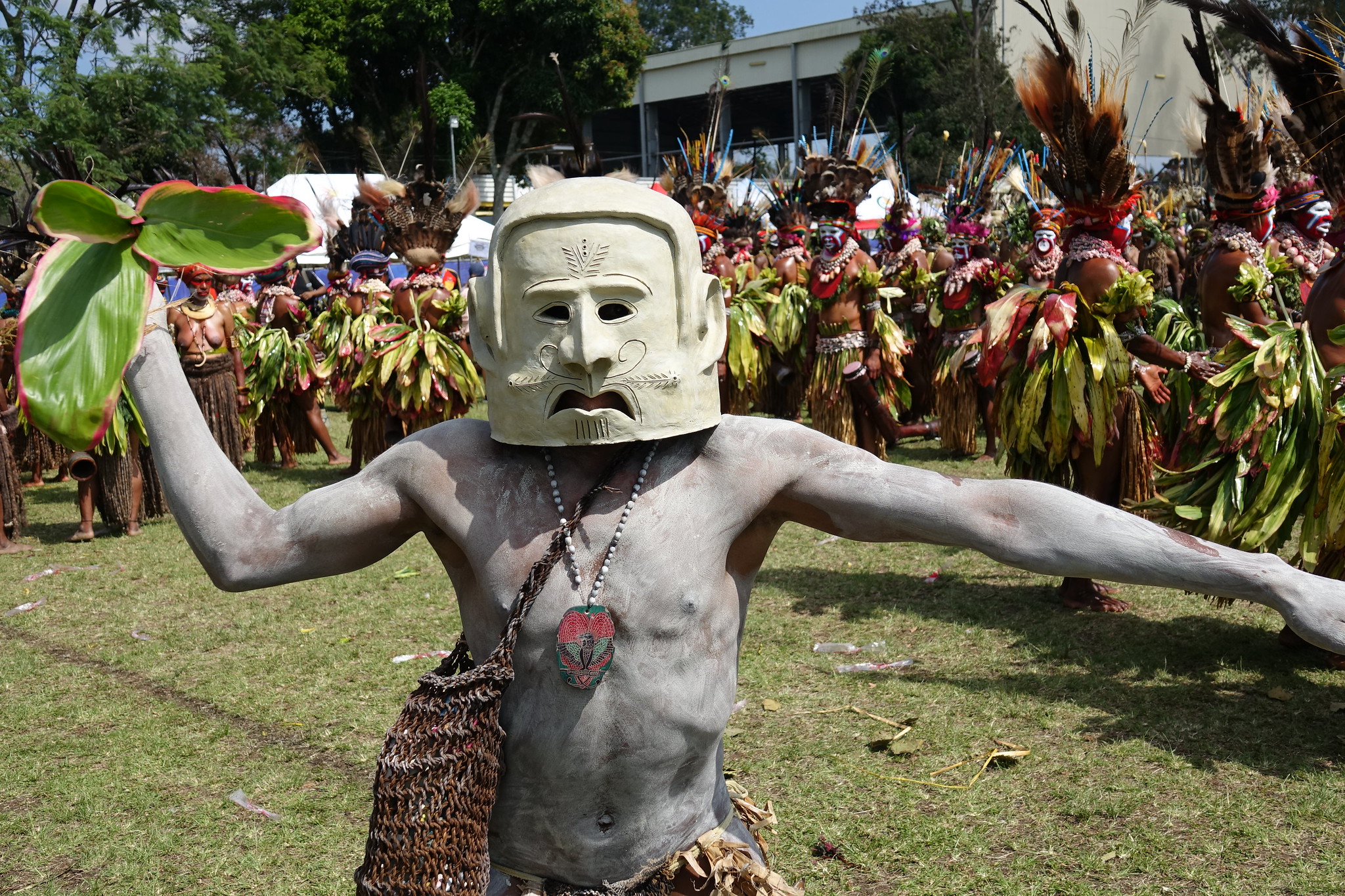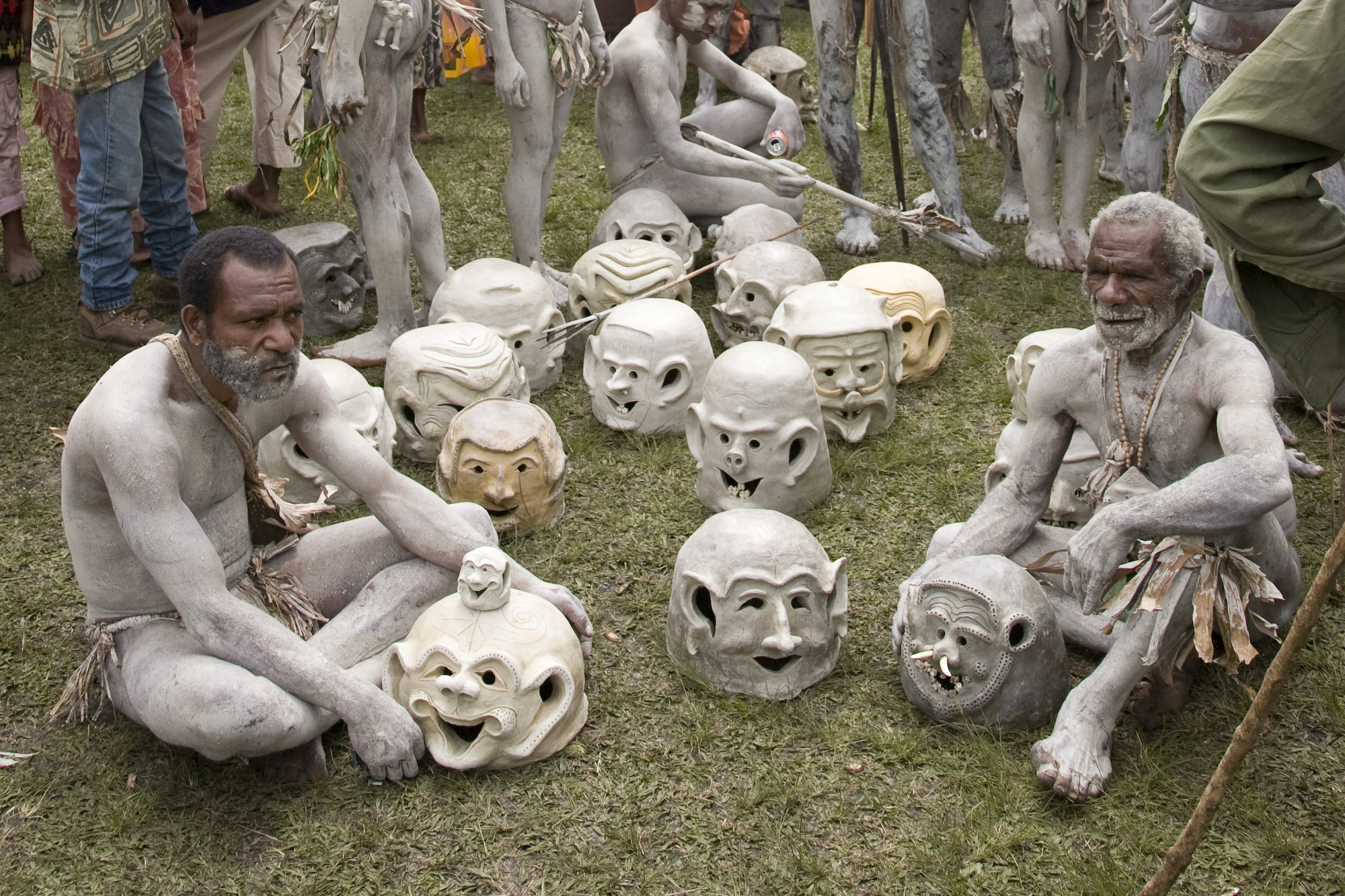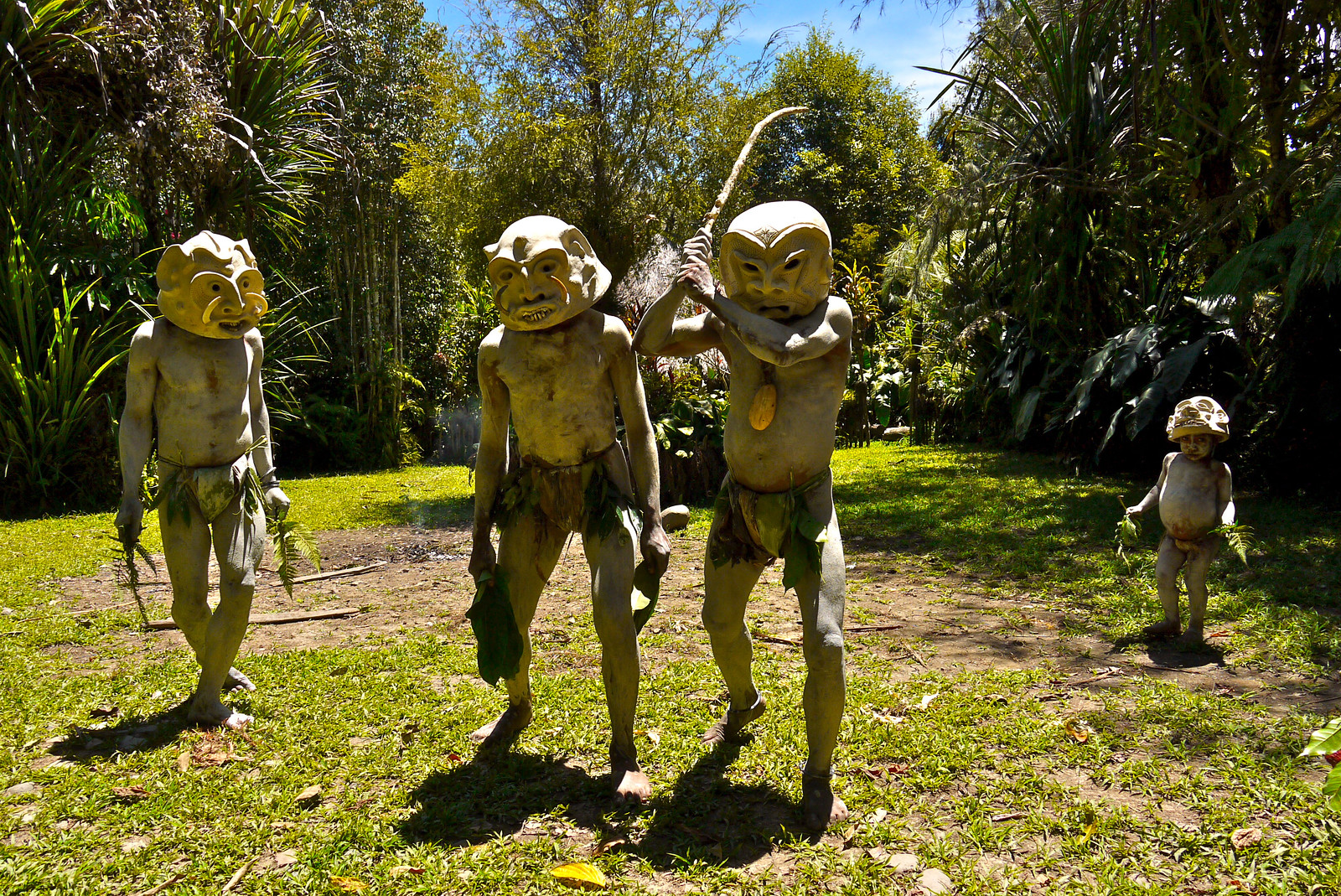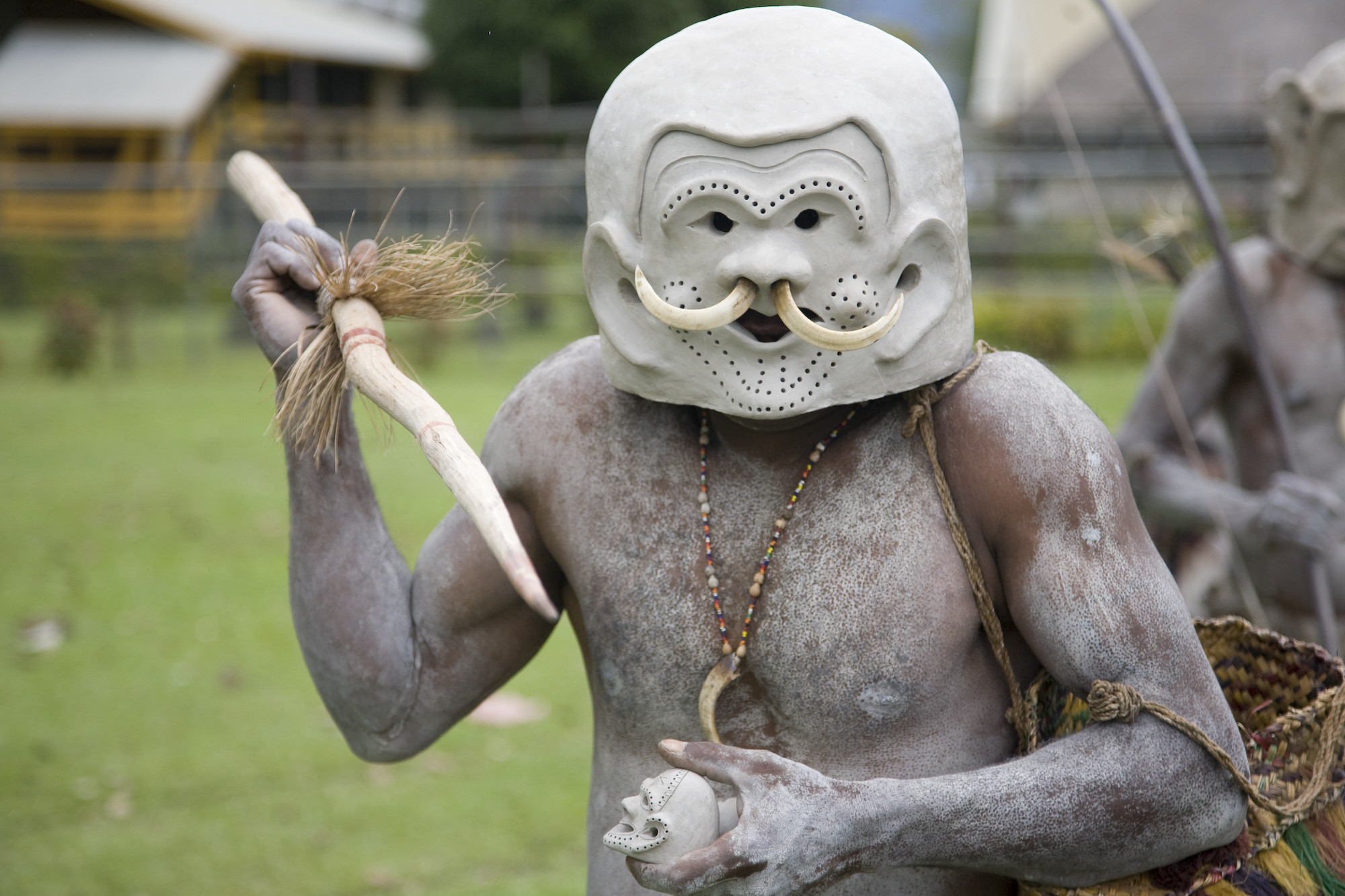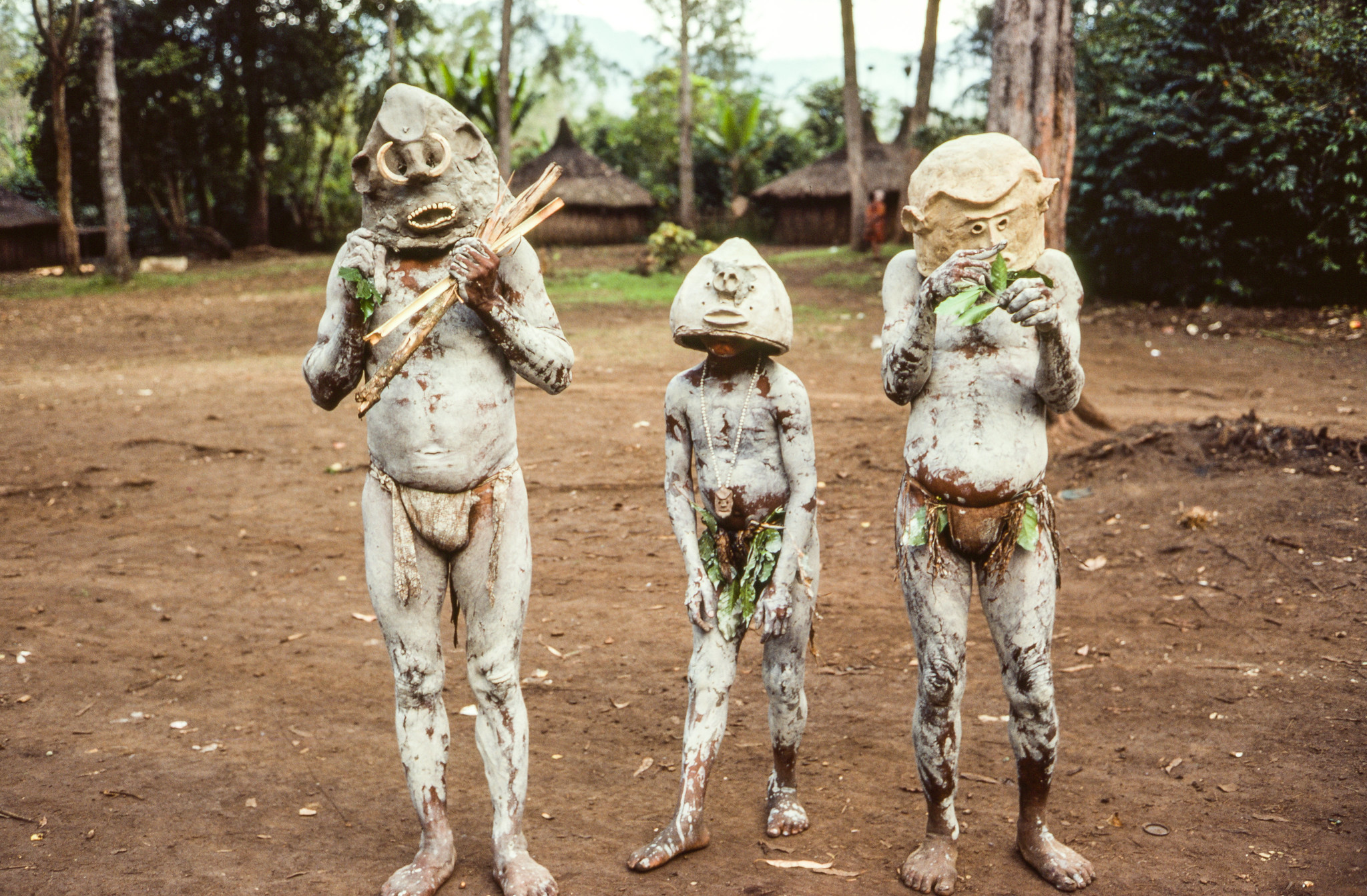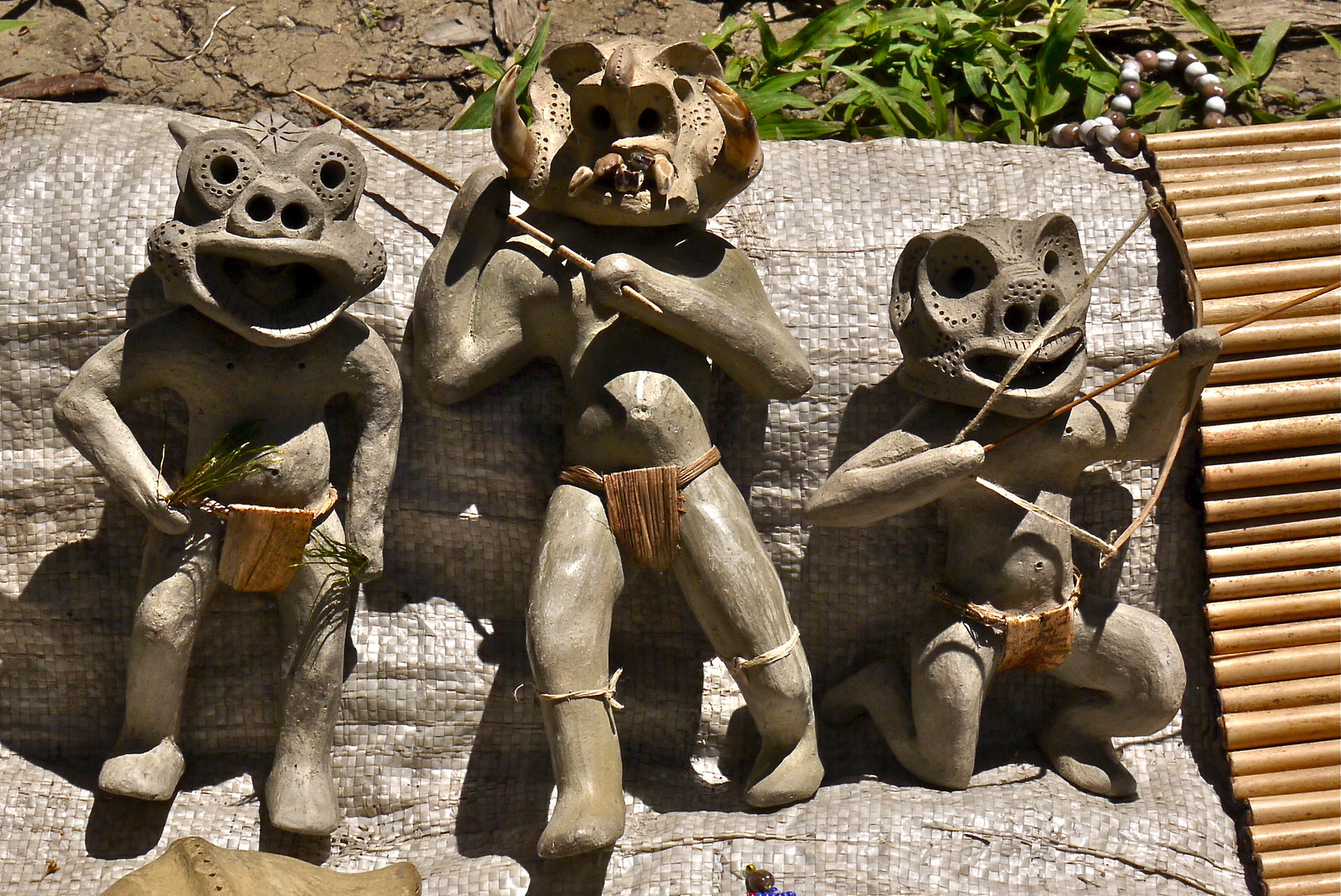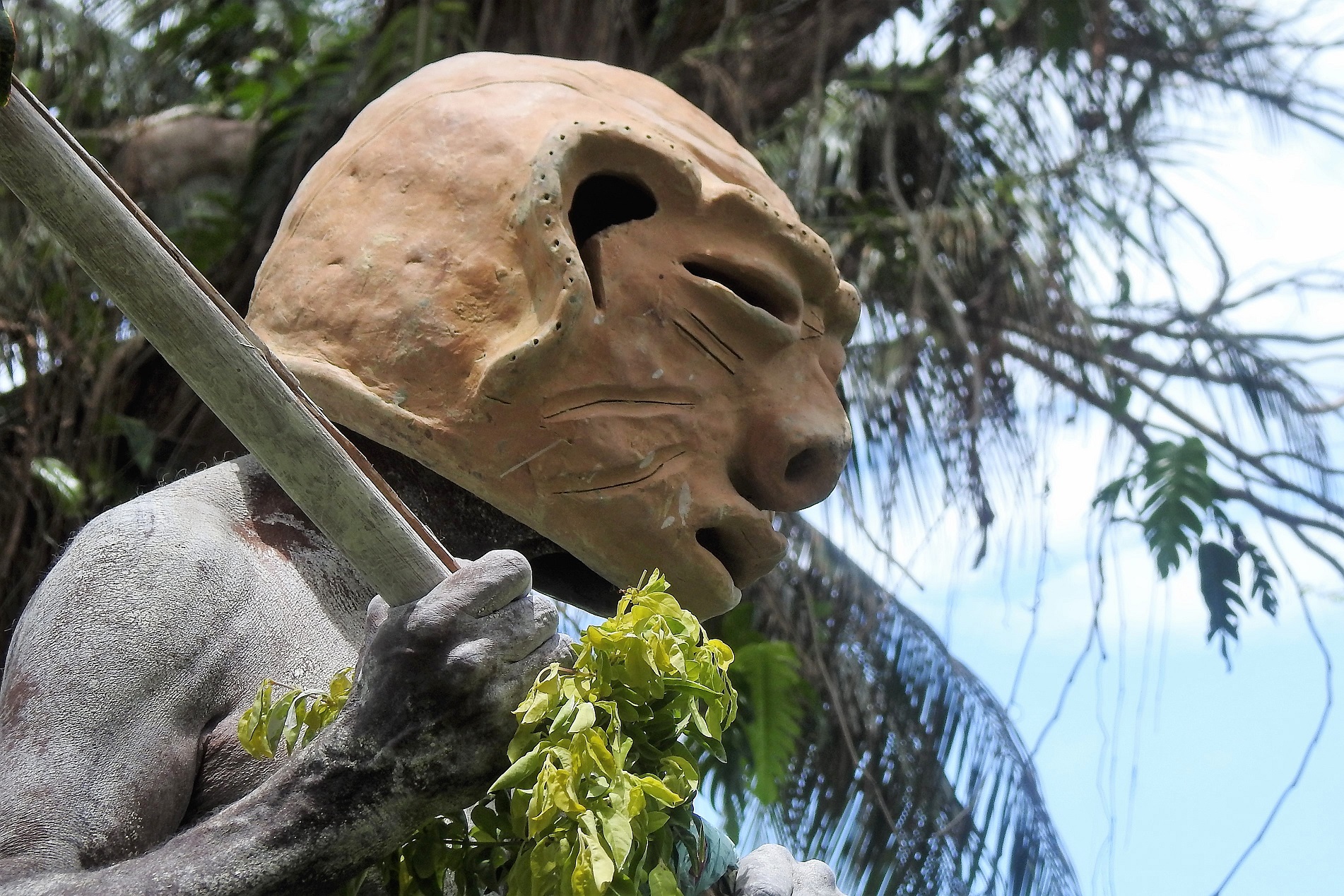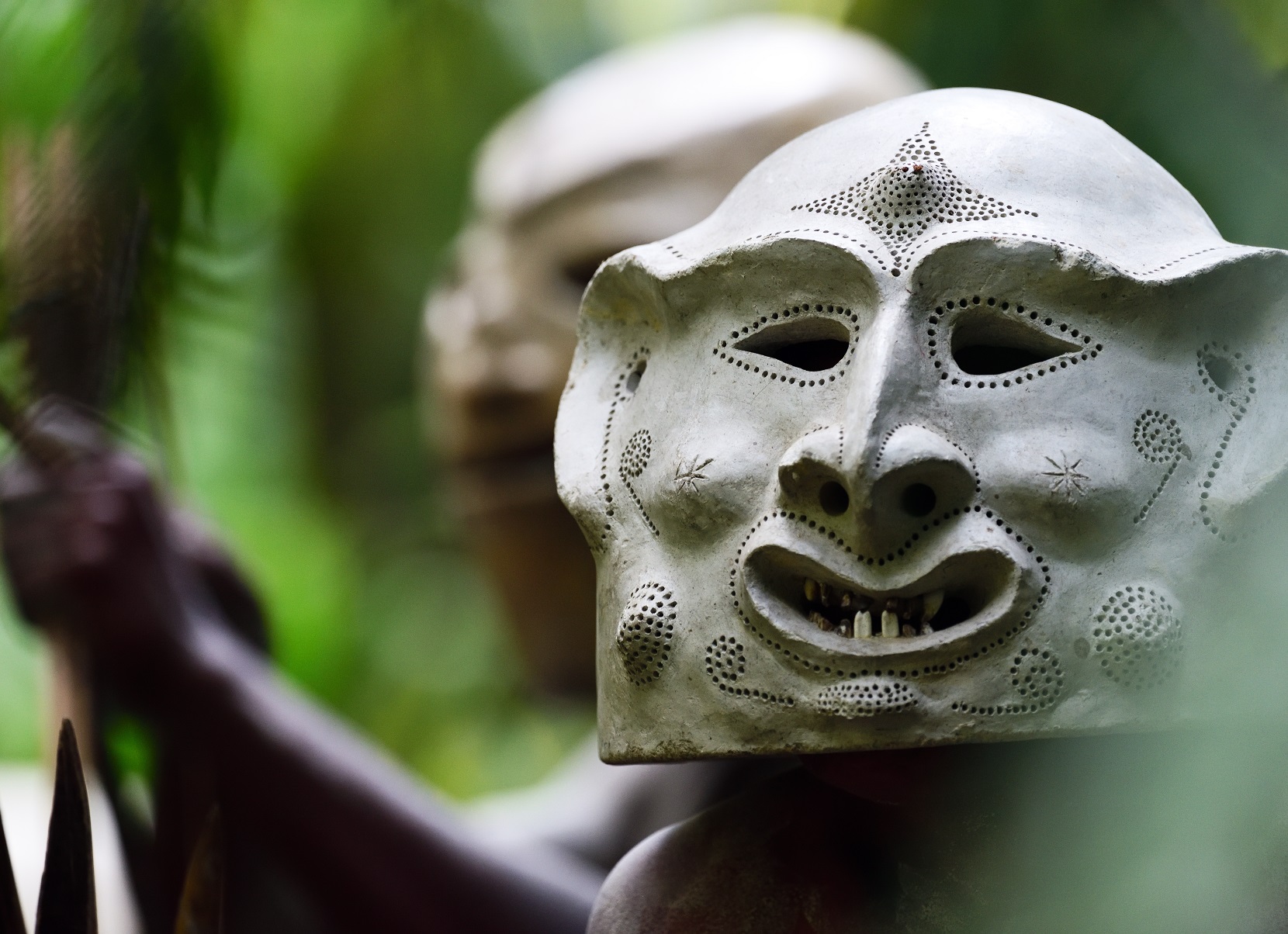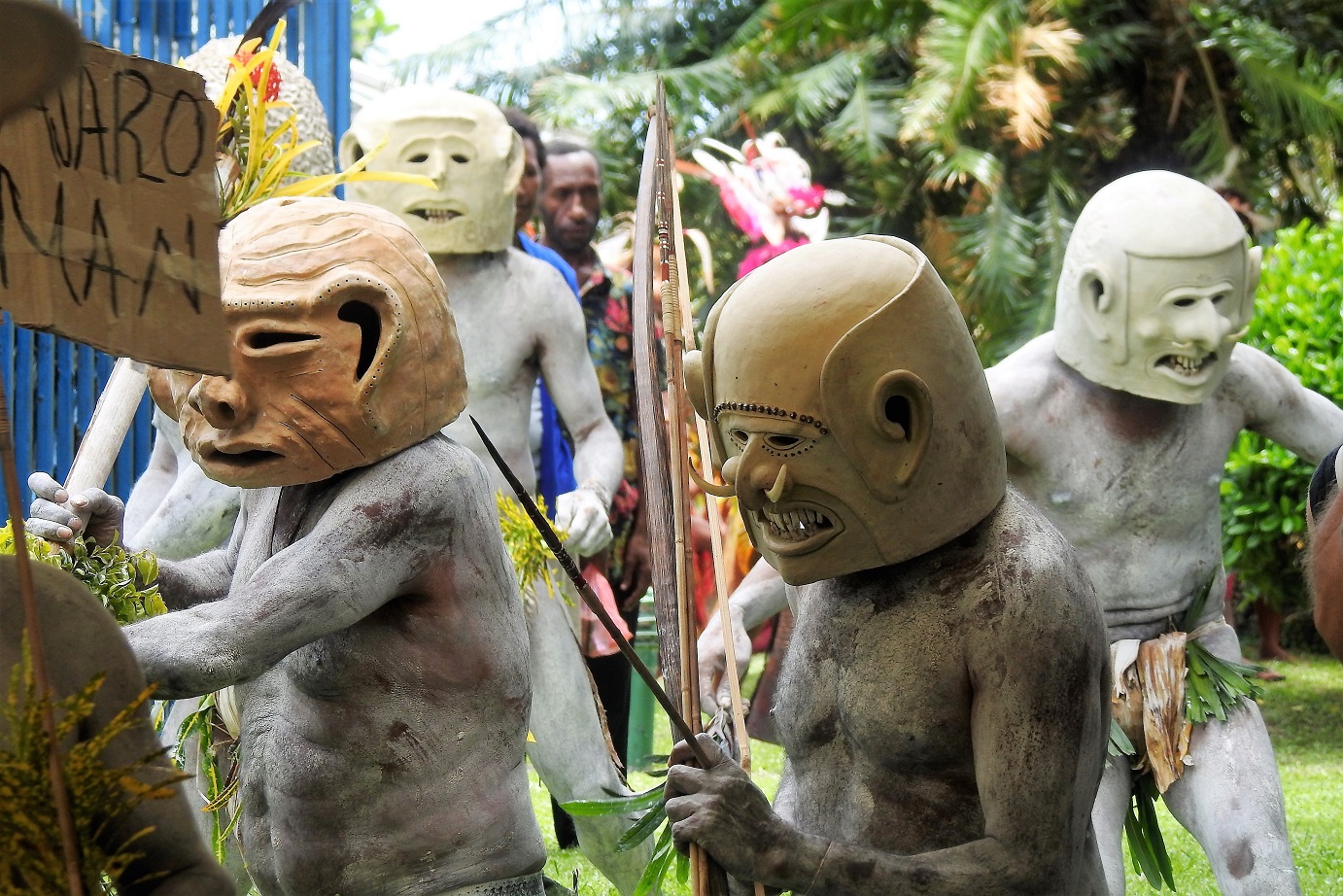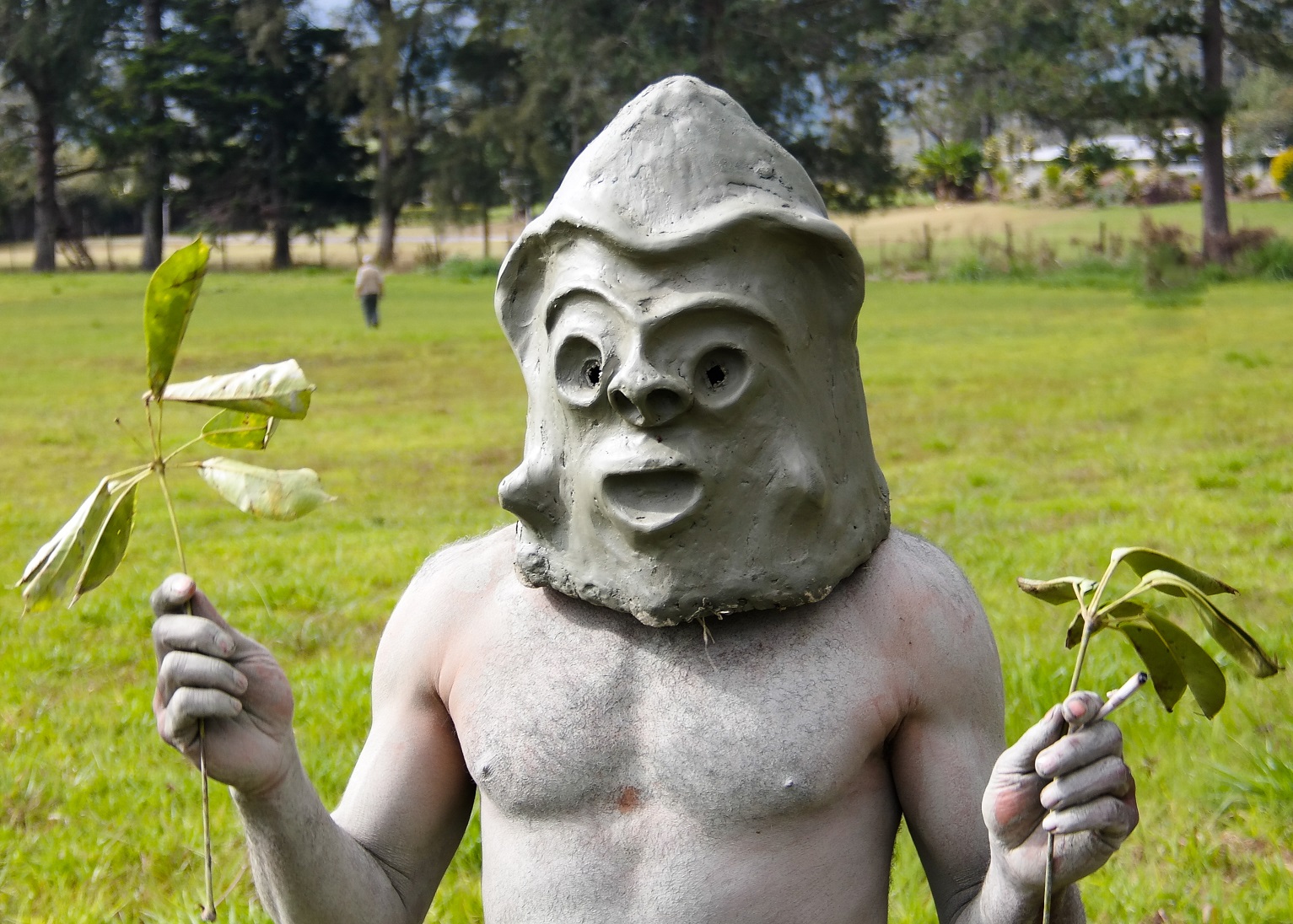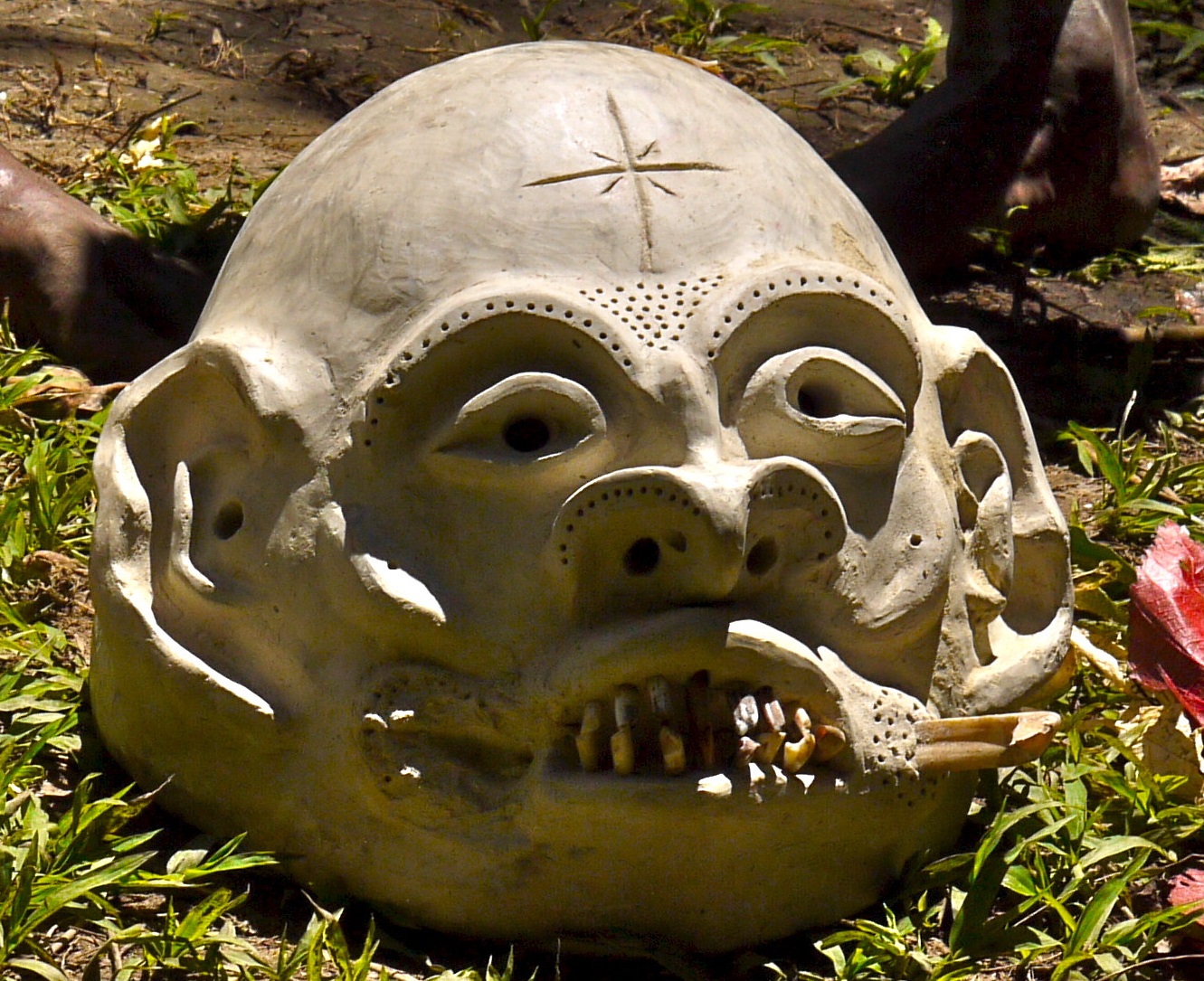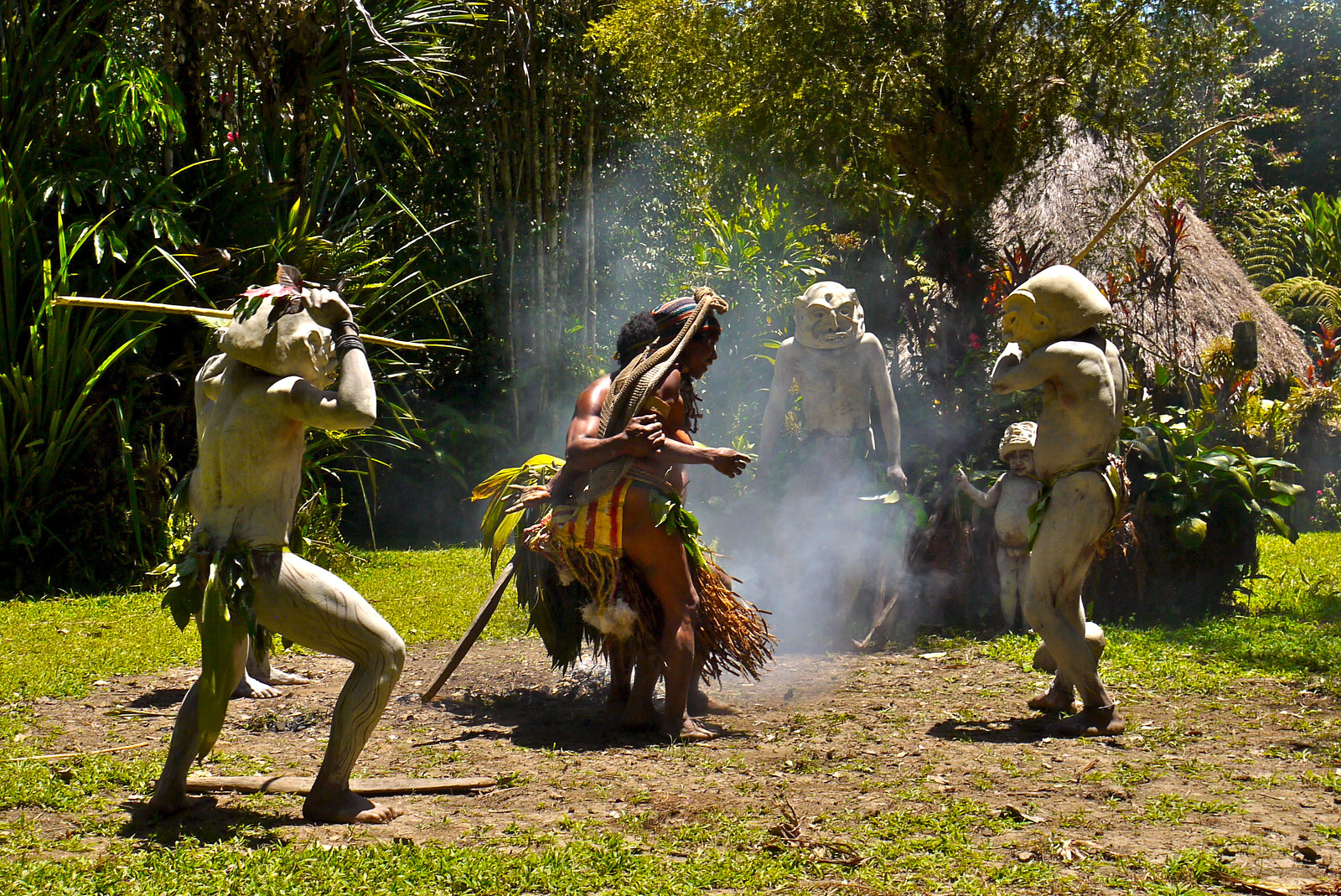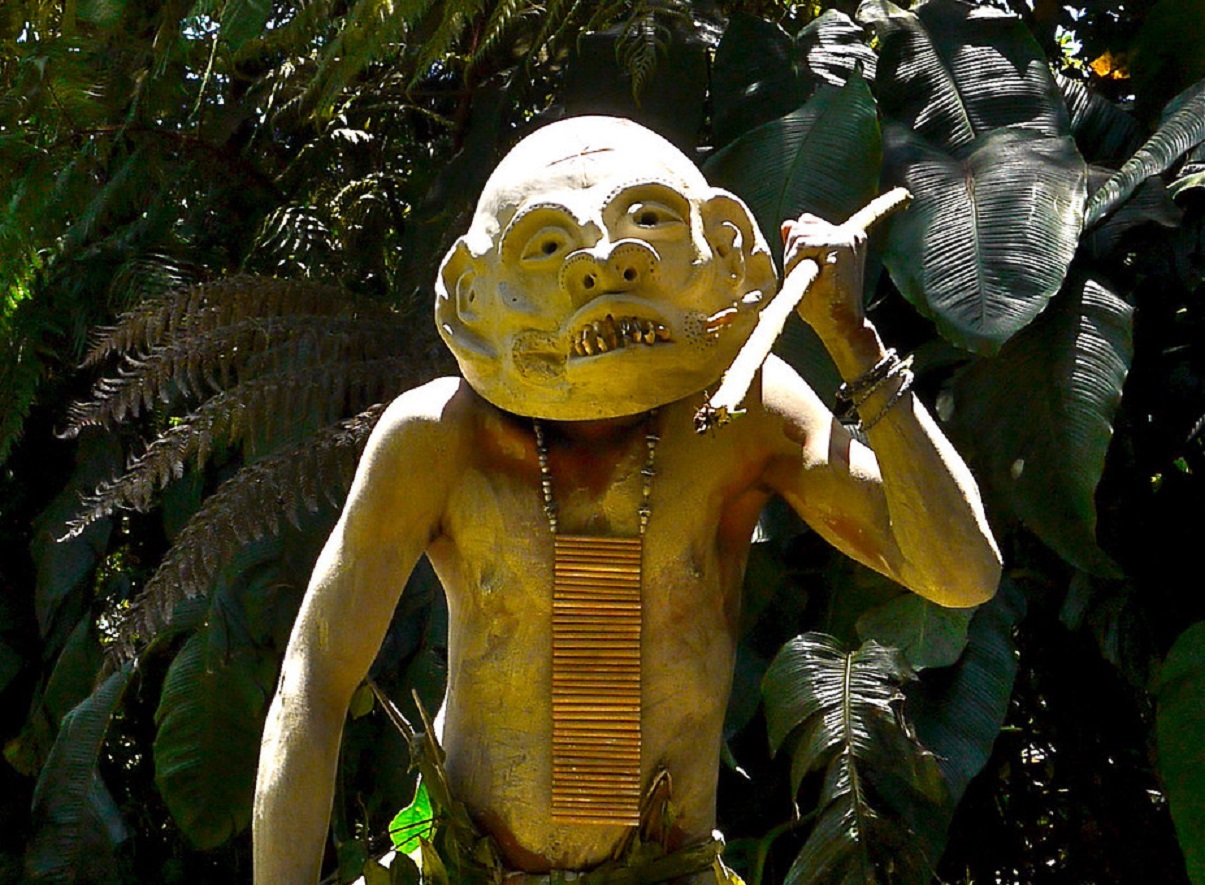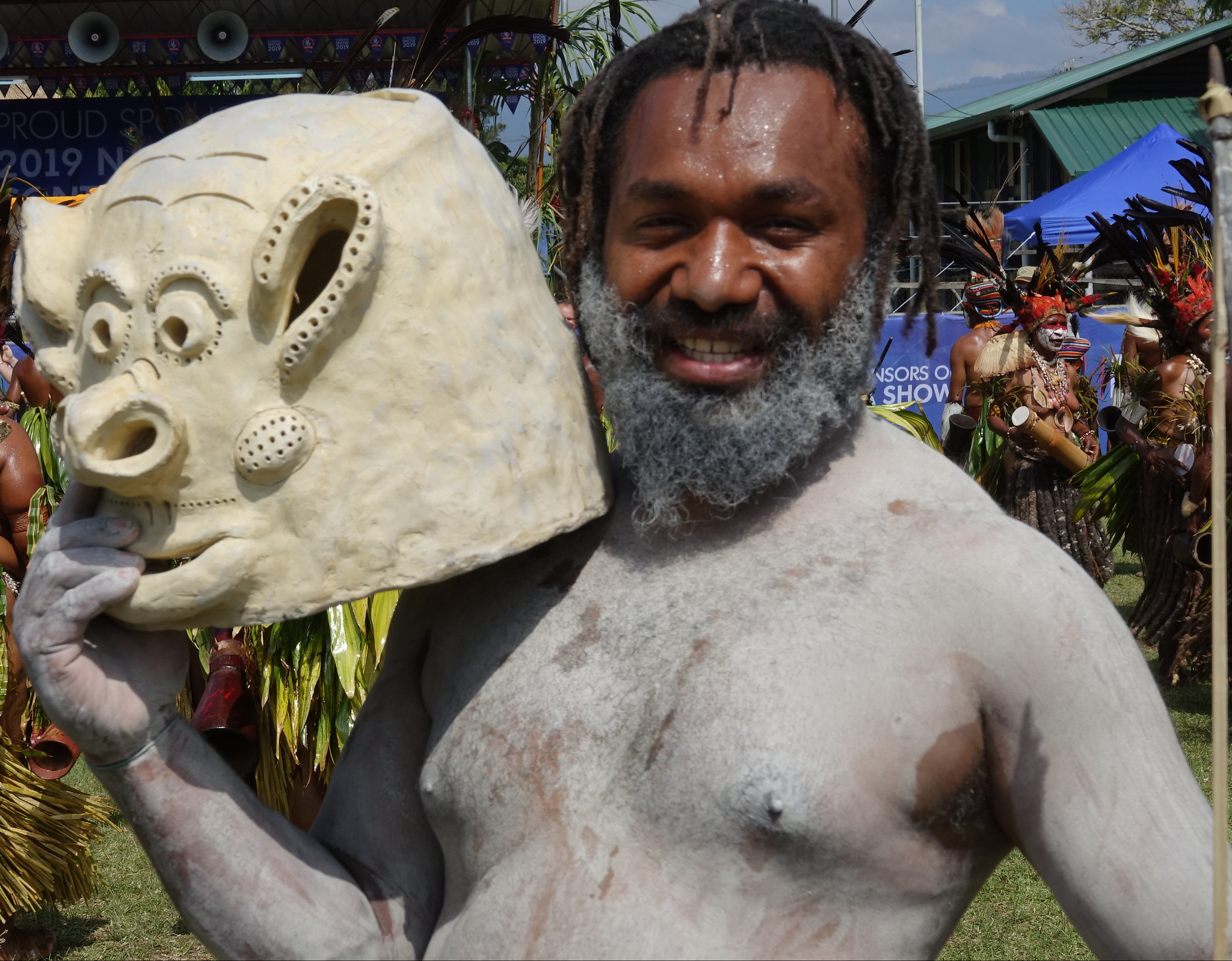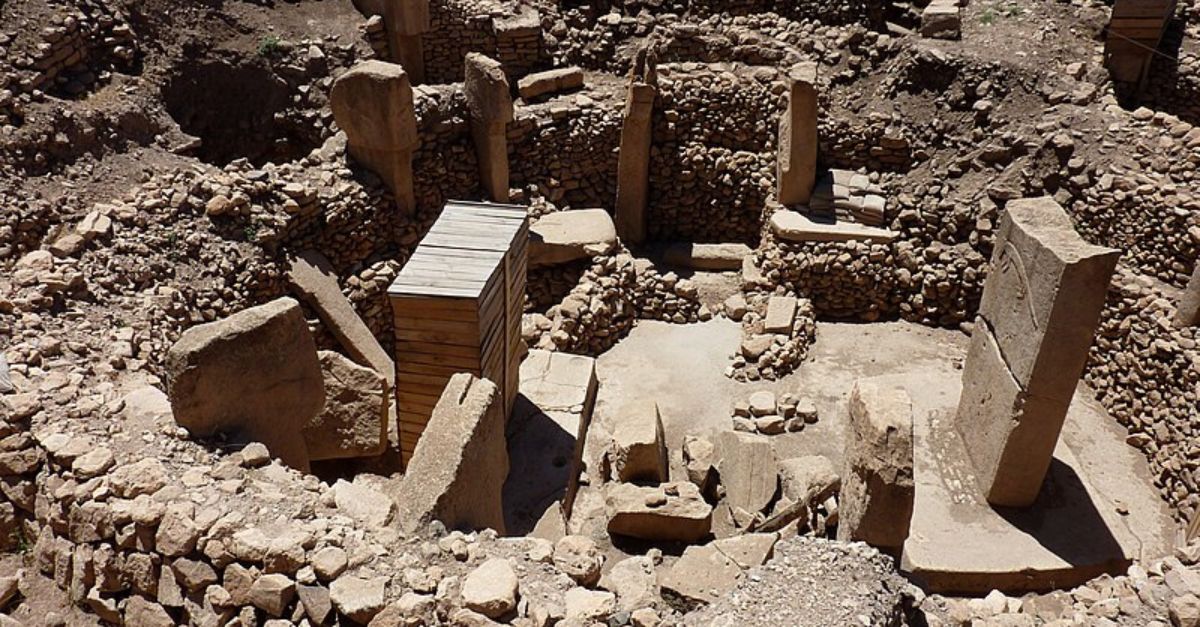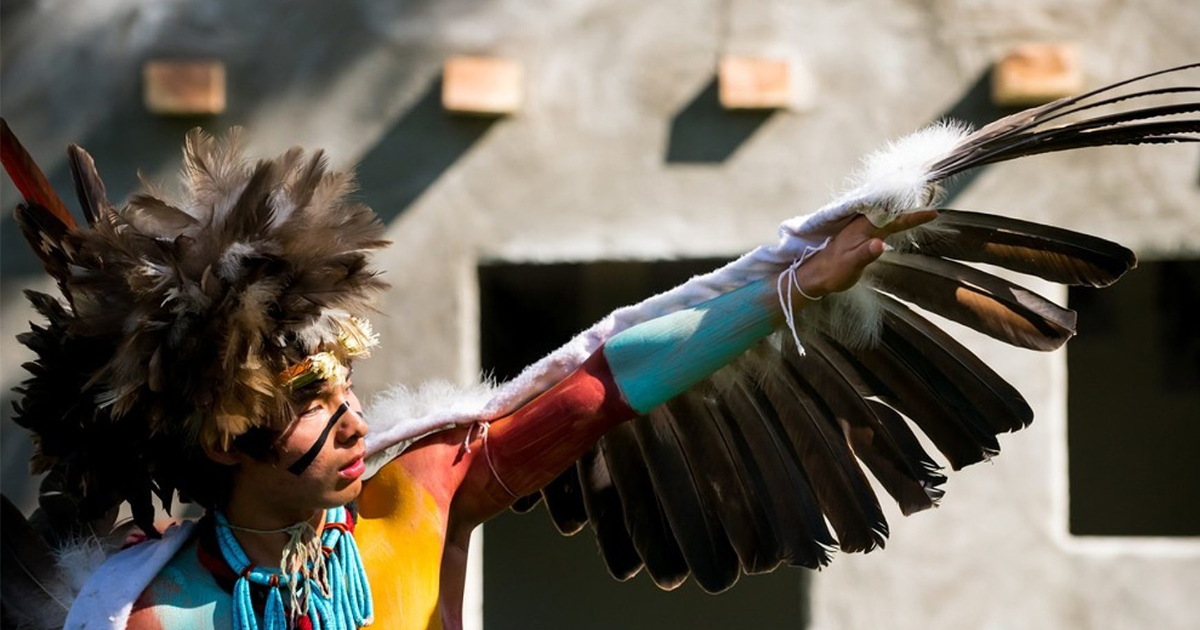The Ghosts Of Papua New Guinea
Renowned for their distinctive mud masks and enchanting Sing-Sing rituals, the Asaro tribe has have long captured the imagination of tourists from all over the world.
But who are these ghostly figures? Once, they were renowned as fearsome warriors, but the story of the Asaro Mudmen is far more complex than the legend most people know.

Who Are They?
The Asaro are one of approximately 300 indigenous tribes on the island of Papua New Guinea. They have become famous for their mud masks called Holosas.
"Holosa" is another name for the group, meaning "spirit". The masks have also led them to be called the Mudmen.
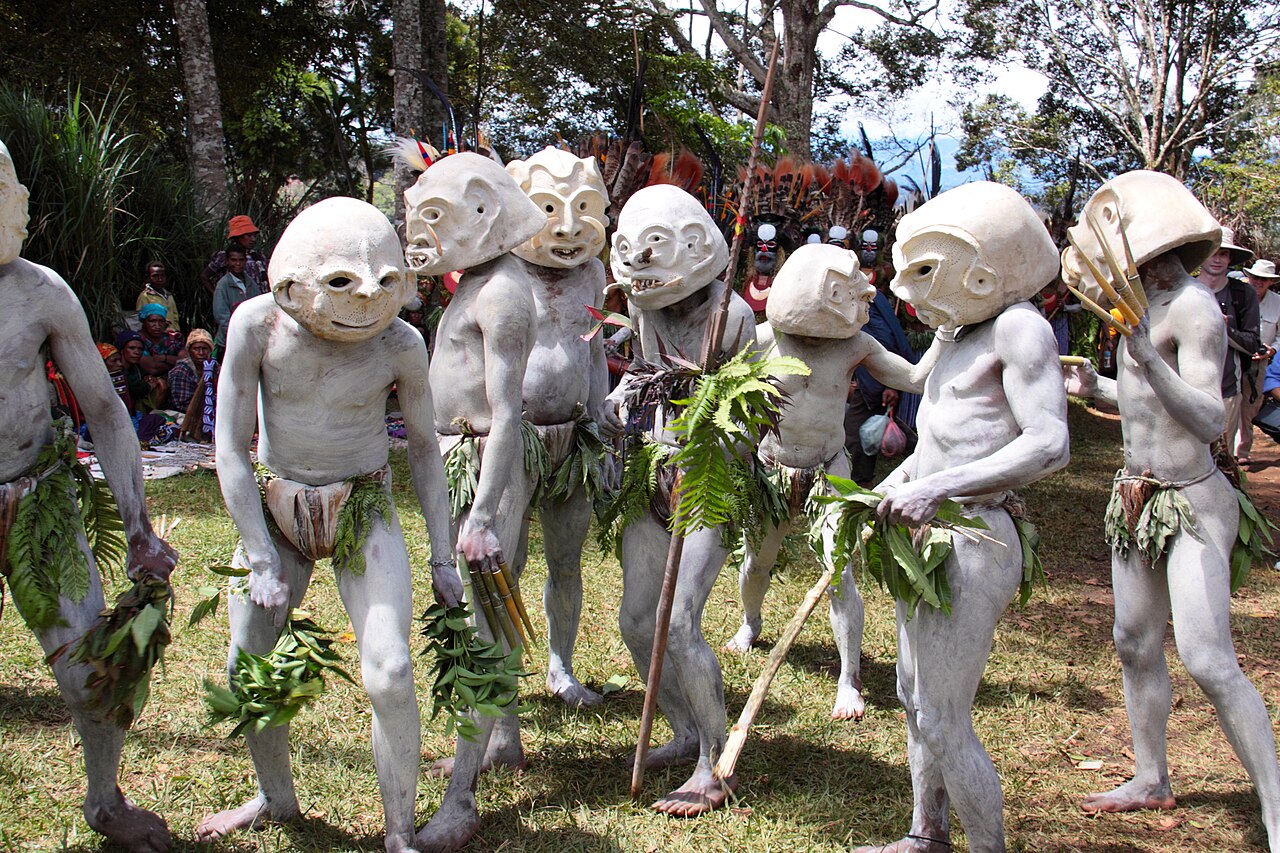 http://veton.picq.fr, CC BY-SA 3.0, Wikimedia Commons
http://veton.picq.fr, CC BY-SA 3.0, Wikimedia Commons
Where Do They Live?
The Asaro live in the Eastern Highlands of Papua New Guinea, a few hours away from the major city Goroka.
Their community is made up of several tribes who live along the Asaro river. The Upper Asaro tribes live above the river on a mountainside that has an elevation of 1500-2300 meters (5000-7500 ft).
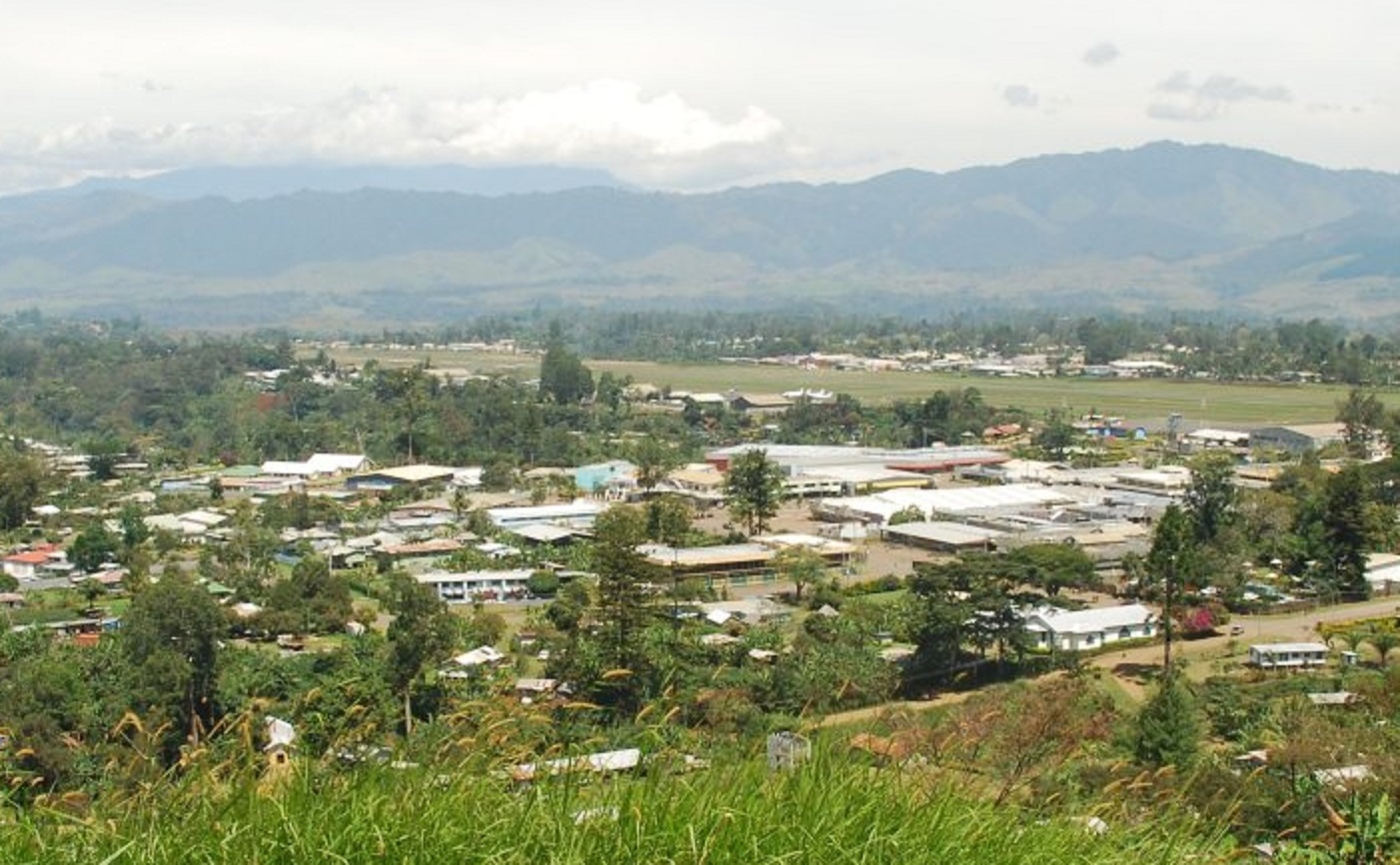 Manuel Hetzel, CC BY 3.0, Wikimedia Commons
Manuel Hetzel, CC BY 3.0, Wikimedia Commons
Their Language
The Asaro speak Dano, a language that is found in a small region of Papua New Guinea.
Since their settlements are spread out and largely isolated from each other, there can be significant differences in the dialect of Dano between the tribes. Many Asaro also speak Tok Pisin, one the country's national languages.
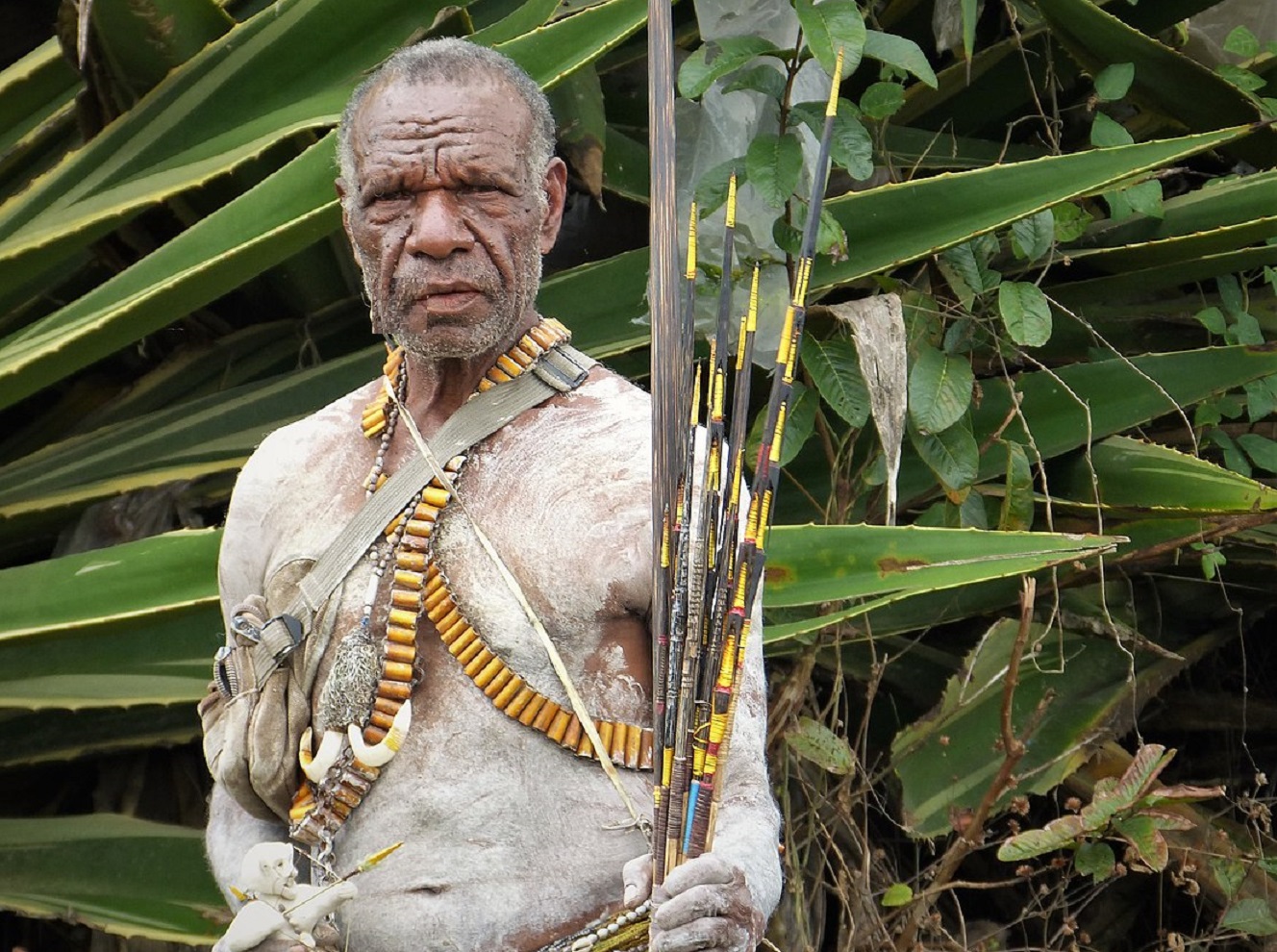 gailhampshire, CC BY 2.0, Wikimedia Commons
gailhampshire, CC BY 2.0, Wikimedia Commons
What Do They Look Like?
The masks feature exaggerated features like elongated ears, misshapen chins, and horns. Some Mudmen also wear bamboo on their fingertips to make their hands look like claws.
Originally, their grotesque appearance was meant to terrify enemies. Now, it's all part of the spectacle for tourists.
How Are The Masks Made?
The masks are made of clay and light wood frames, and they take several days to dry in the sun.
When they're done, they weigh about 20-25 pounds. The Mudmen wear the heavy masks without any padding to protect their shoulders.
 Jialiang Gao, CC BY-SA 3.0, Wikimedia Commons
Jialiang Gao, CC BY-SA 3.0, Wikimedia Commons
Who Makes The Masks?
Only one man, Kowa, makes the mud masks for the whole community. This responsibility has been passed down to the men in his family for generations. His ancestor made the very first mud mask, and his son will take on the tradition when Kowa passes on.
Origin Stories
The Asaro are an oral culture, so there are a few different stories about the origins of their masks.
According to the version that's told the most, about two hundred years ago, the group was attacked by a stronger tribe. They fled to the Asaro river, but when their attackers saw the Asaro in the water, they were horrified.
The Ghost Tribe
When the Asaro stood up from the water, they were covered in grayish-white river mud.
The enemy tribe thought it was the ghosts of the Asaro they had slain, and ran away in fear.
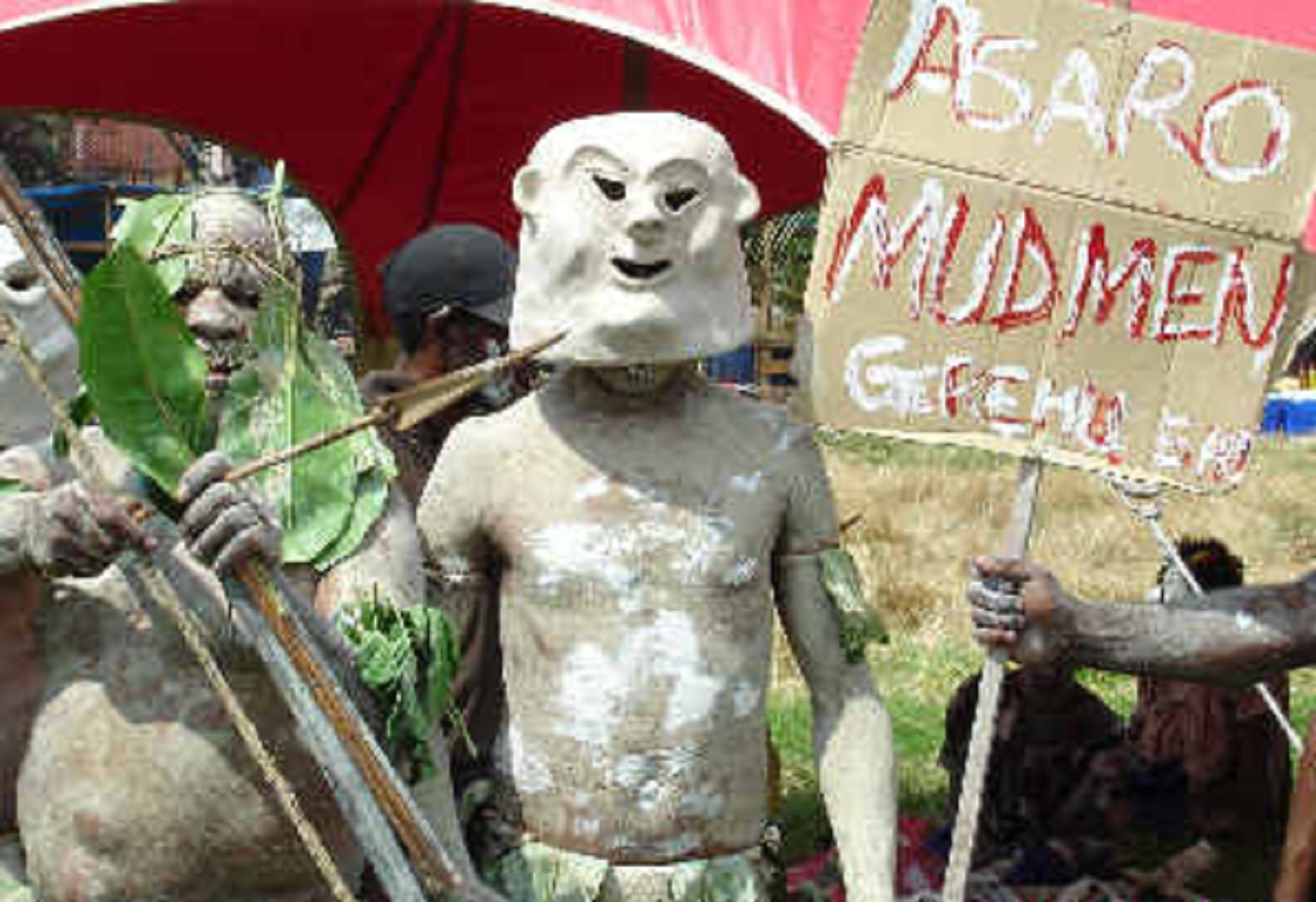 Tmichie~commonswiki, CC BY-SA 3.0, Wikimedia Commons
Tmichie~commonswiki, CC BY-SA 3.0, Wikimedia Commons
Why Did They Run?
Many tribes in Papua New Guinea are afraid of ghosts. When the Asaro realized that was why their enemies had run away, they came up with a plan to fight back.
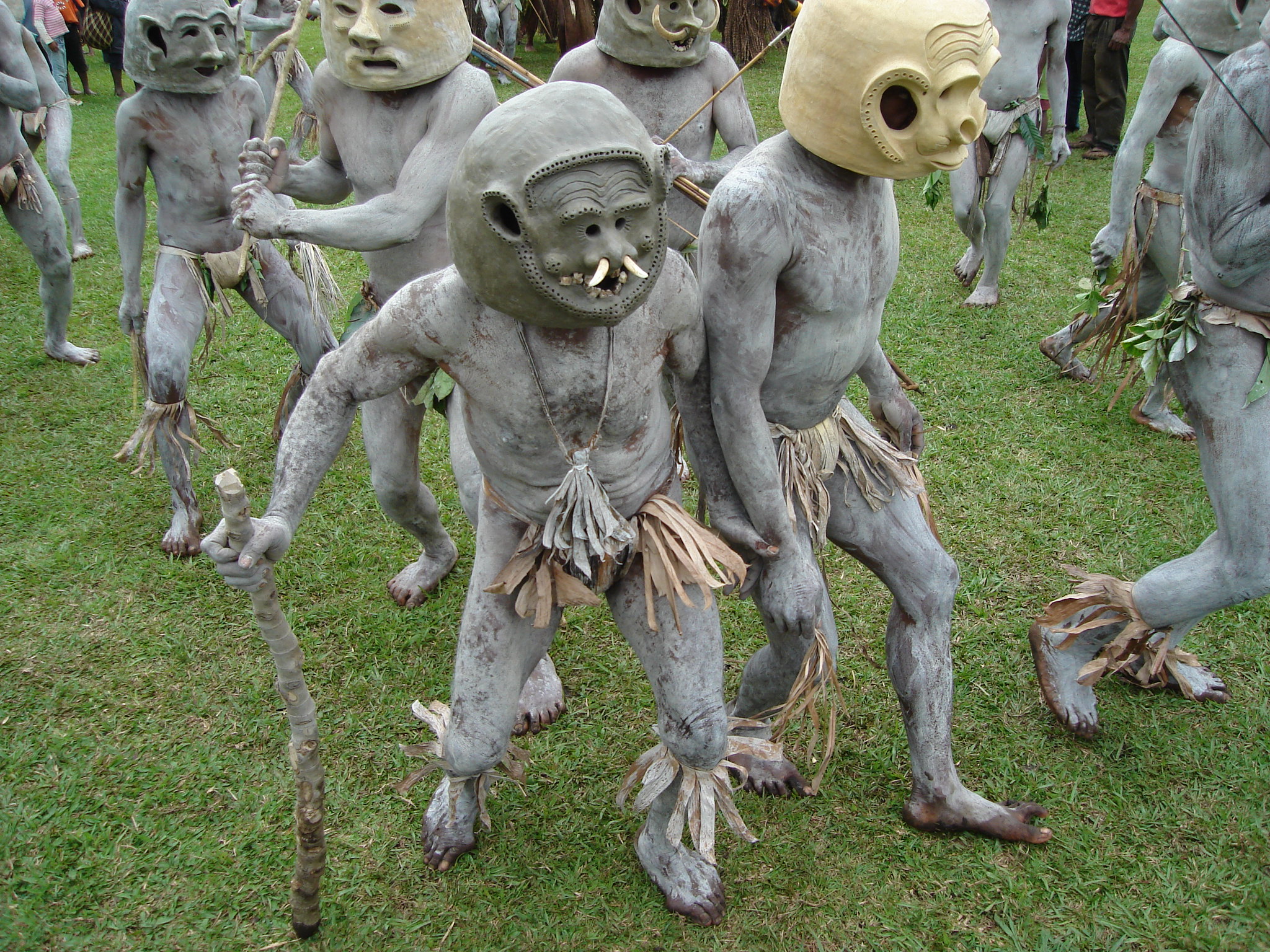 Kahunapule Michael Johnson, Flickr
Kahunapule Michael Johnson, Flickr
Why Did They Wear Masks?
The Asaro covered their bodies with mud from the river but left their faces bare since they thought the water was poisonous.
They used rocks and sticks to make masks, before going back to their village, where their enemies had retreated.
A Fierce Reputation
When the enemy tribe saw the Mudmen, they ran away again. This time, they spread word of the ghost tribe, and the peaceful Asaro earned a reputation of being fearsome warriors.
A Second Story
Another version of the story says the masks originated at a wedding ceremony. Everyone was dressed in traditional costumes, except one man.
To make a costume, the man covered himself in mud and made a mask out of an old bag and dried mud. When everyone else saw him, they thought he was a ghost, and all ran away.
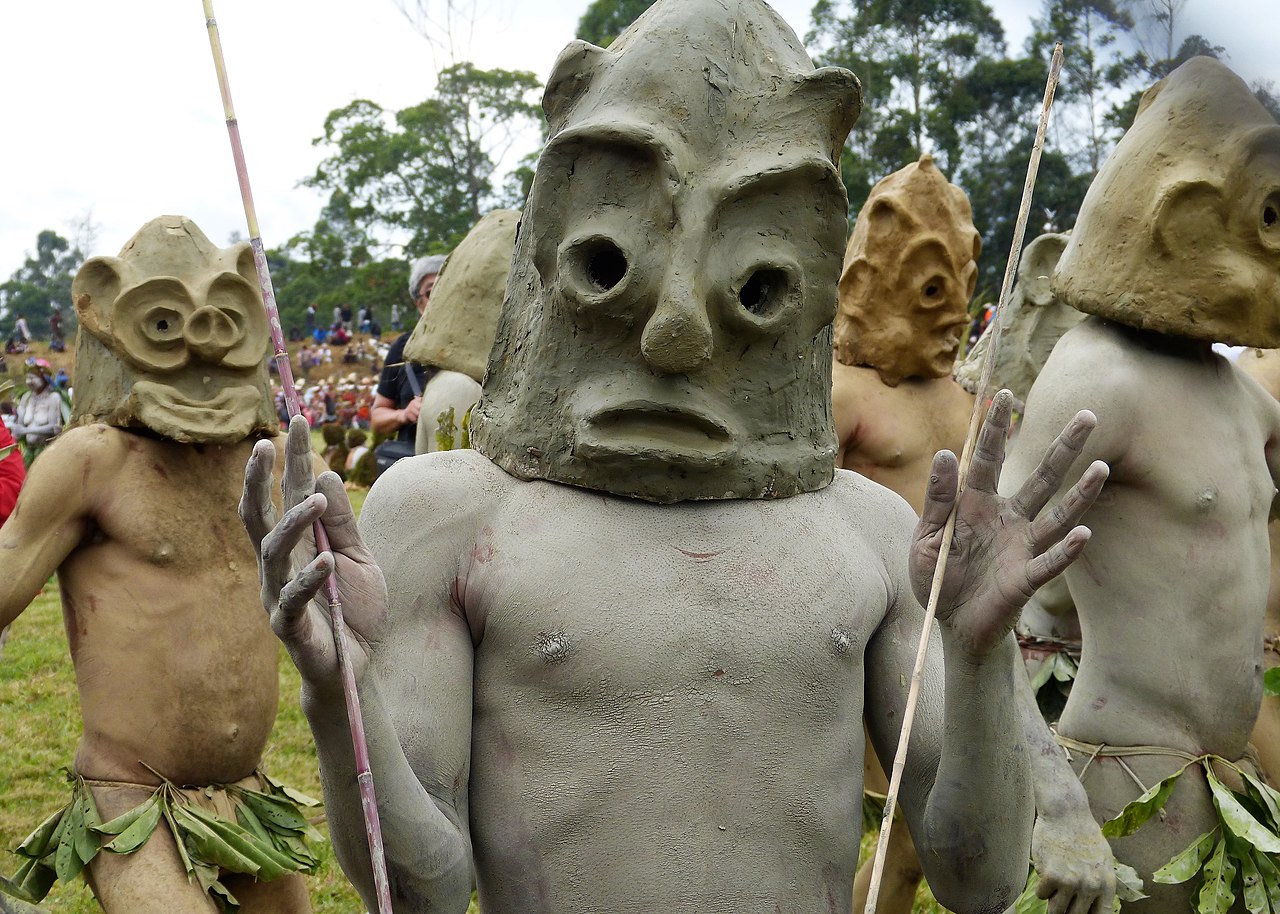 gailhampshire, CC BY 2.0, Wikimedia Commons
gailhampshire, CC BY 2.0, Wikimedia Commons
Different Story, Same Ending
In this second story, the man realized how well his disguise worked and told his village about it. Covered in mud and masks, they attacked their enemies, who fled in fear of the "ghosts" approaching.
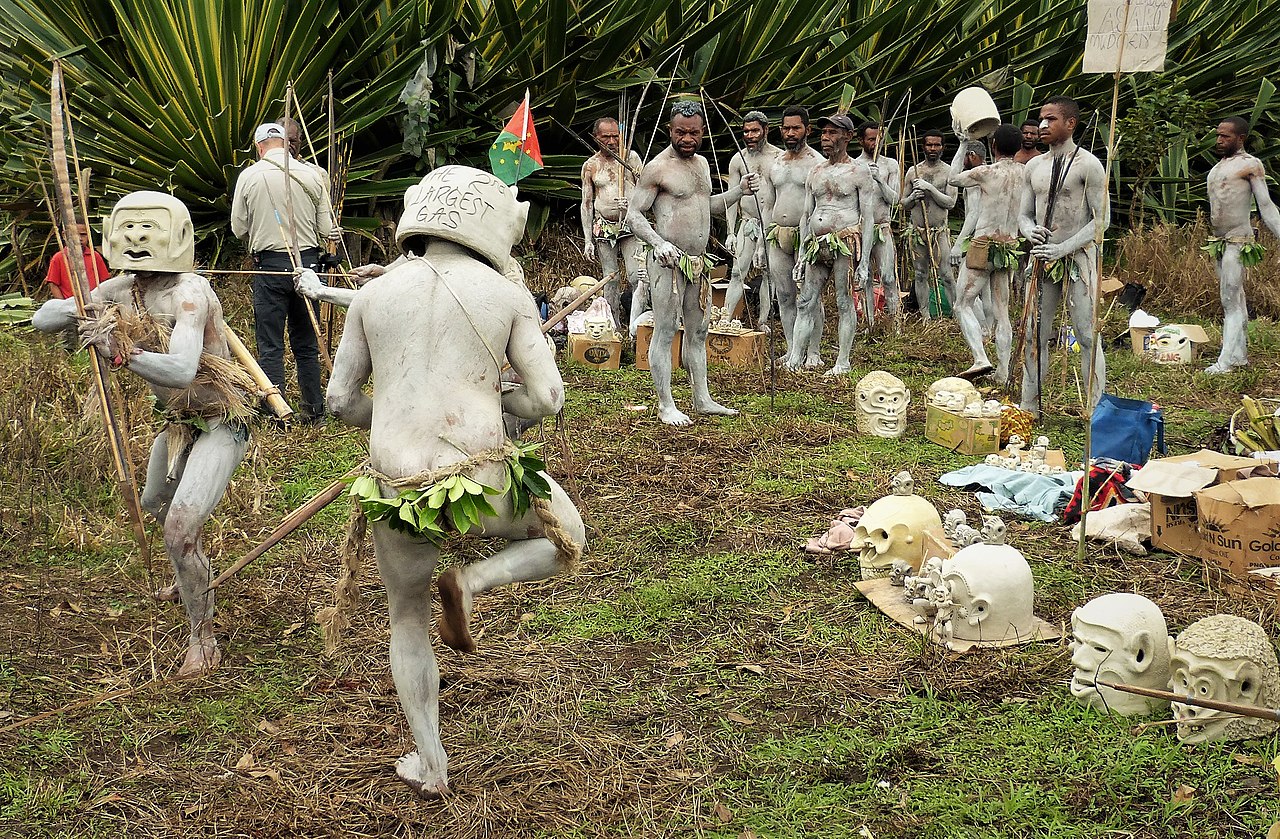 gailhampshire, CC BY 2.0, Wikimedia Commons
gailhampshire, CC BY 2.0, Wikimedia Commons
The Art Of Deception
The third story about how the Asaro masks came to be is rooted in more historical basis.
In the 19th century, the Asaro's leader, called the chairman, learned the art of bakime from another tribe. Bakime is the act of using a disguise to get revenge on your enemy.
The First Masks
The other tribe used white tree sap for their disguise, but the Asaro chairman took his version of bakime one step further.
He covered a light wooden frame with a bag and cut eyeholes in it. Then he smeared mud over it, shaping it into something like the haunting masks we see today.
Their Crops
The Asaro are excellent farmers, who have a profound knowledge of weather patterns and the soil around them. Rice and sweet potatoes are their staple foods.
Their Religious Beliefs
The Asaro have always had a deep reverence for nature, and they used to believe that the spirits of their ancestors lived in the trees, rocks, and waters around them.
That changed after missionaries arrived in Papua New Guinea. Nowadays, it's estimated the up to 90% of Asaro are Protestant Christians.
Their Homes
The traditional housing of the Asaro people is built in a rectangular or circular shape. Bamboo and cane are woven to create the shape of the house, and the building is low to retain heat during cold nights.
The roof, however, is raised, to release smoke from the hearth.
Marriage
Traditionally, Asaro grooms pay a bride-price before they can marry a woman. Food, livestock, and money are all accepted forms of payment.
Once married, the bride will move in with the groom. There, she is expected to take care of him and his family.
The Spear Raids
Mud masks were popular among several tribes in the highlands of Papua New Guinea, and up until the mid-20th century, it was common for tribes to don masks and raid each other's villages. Pigs and women were most sought after during these raids.
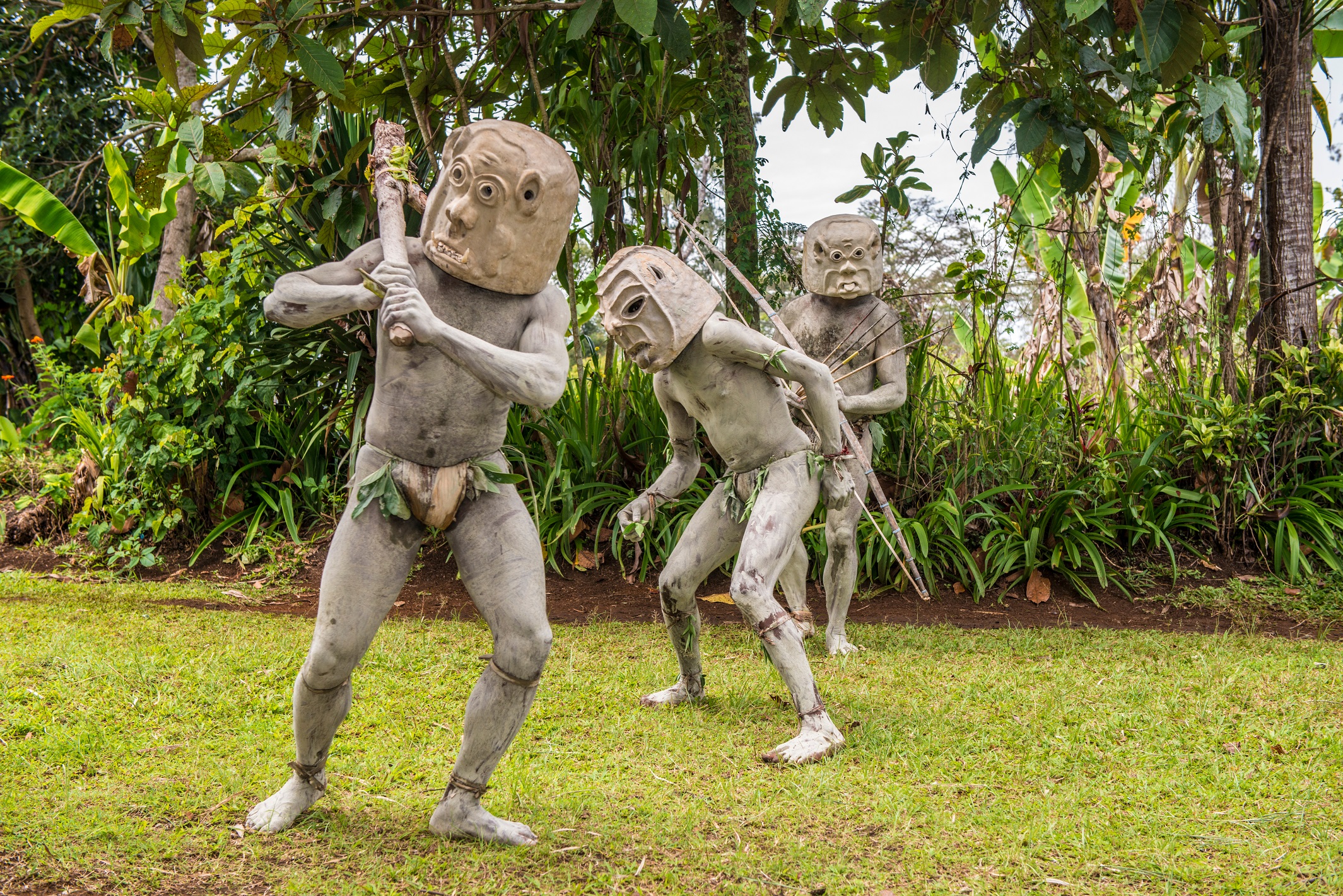 Ron van der Stappen, Shutterstock
Ron van der Stappen, Shutterstock
The Agricultural Show
In 1957, hoping to stop the raids, missionaries organized an agricultural show where indigenous tribes could display their culture in a positive way.
When the Asaro were invited, their chairman, Ruipo Okoroho, new this was an opportunity for his tribe to step into the international spotlight.
The First Sing-Sing
Okoroho gathered the Mudmen and had them wear the first versions of the large, heavy masks that are worn today.
On the day of the agricultural show, which was the first Sing-Sing, 200 Mudmen emerged from the woods, performing a traditional dance.
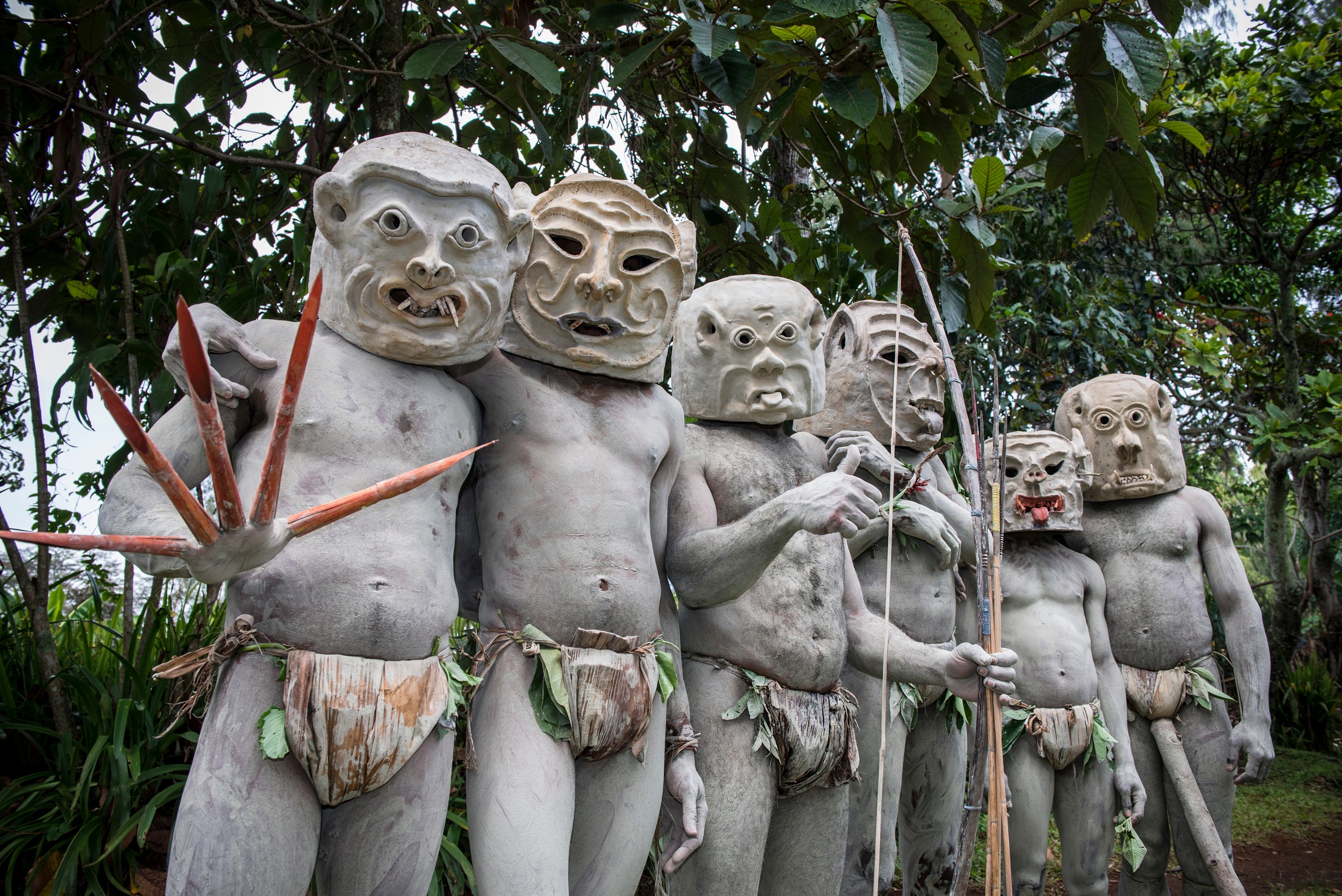 Ron van der Stappen, Shutterstock
Ron van der Stappen, Shutterstock
The Main Attraction
The Asaro won first place at the agricultural show. After they did it again for the third consecutive year, the show nixed the competitive aspect.
There may not be any prizes, but it's safe to say the Asaro are still the main attraction at what has turned into the annual Goroka Show.
The Goroka Show
Today, the Goroka Show is an three-day festival that draws in tourists from around the world. Multiple tribes and villages take part in the Sing-Sing, showing off their unique dances, music, and cultures with tourists.
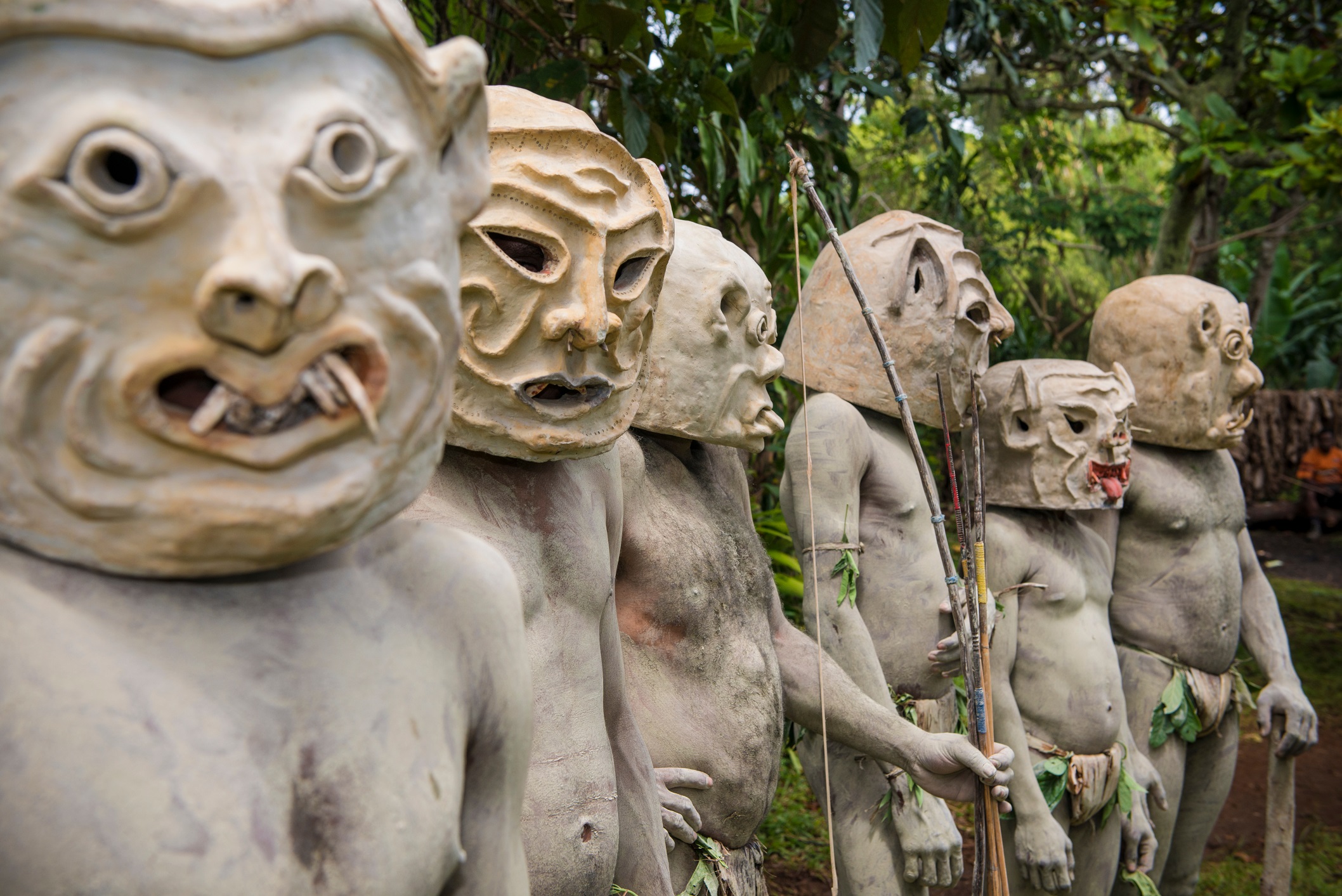 Ron van der Stappen, Shutterstock
Ron van der Stappen, Shutterstock
The Importance Of Dance
Dances are one of the most important parts of the Sing-Sing. Using intricate gestures and movements, dances tell stories about a tribe's history and legends. They are also a way of preserving cultural identity and knowledge throughout the generations.
The Dance Of The Mudmen
The dance the Mudmen perform during the Sing-Sing is meant to mimic the movements of a lifeless body. They walk slowly, pretending that their postmortem bones are brittle.
They also carry leaves to act as if they are swatting away flies who are drawn to the decaying flesh of the dead.
A Fearsome Sight
When the Asaro Mudmen first step out of the woods for the performance, they are a frightening sight.
Covered in clay and wearing their masks, some carry their bows with arrows knocked, while others cautiously look around, prepared to face anything with their clubs and spears. Throughout the act, the Mudmen are eerily silent.
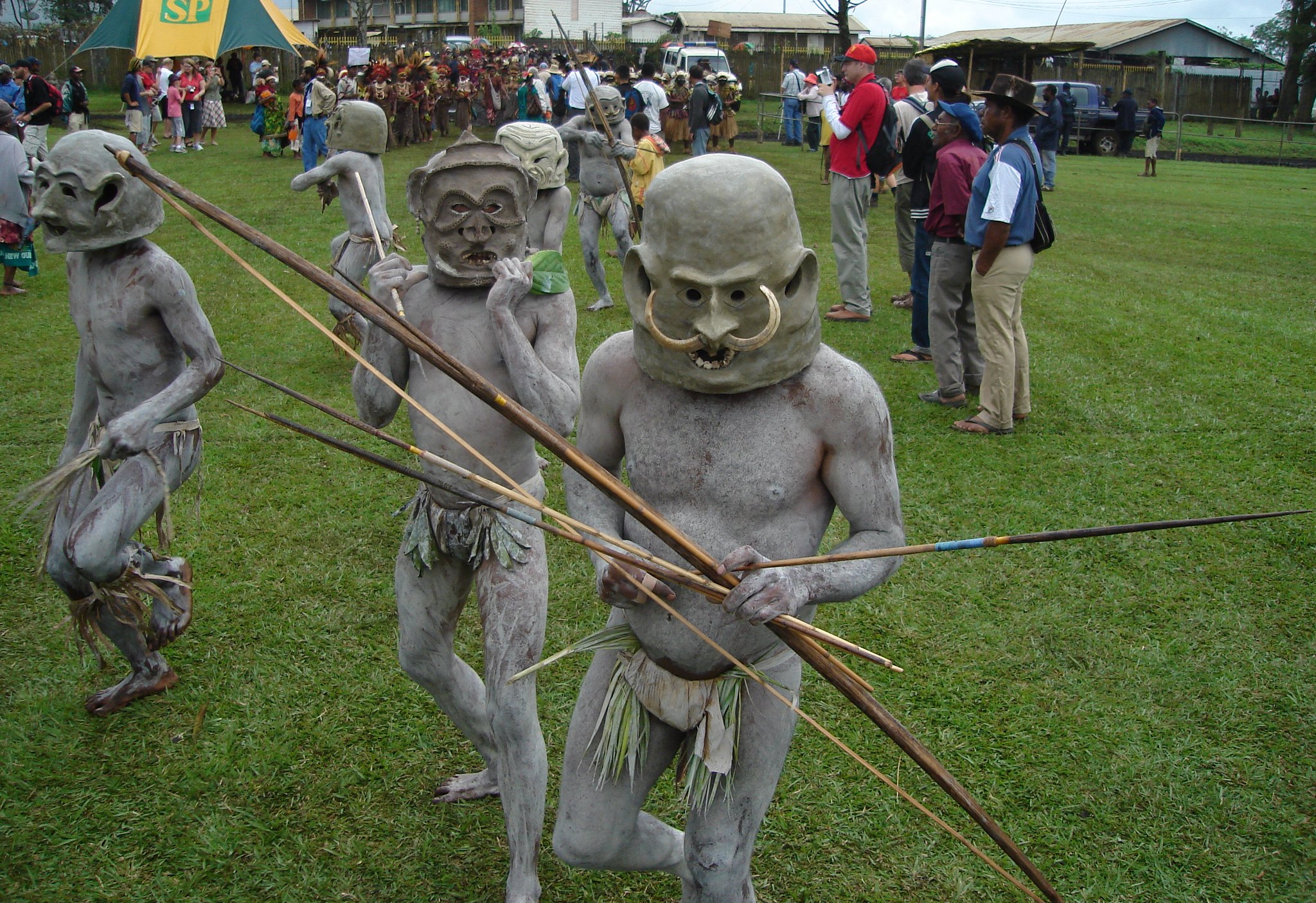 Kahunapule Michael Johnson, Flickr
Kahunapule Michael Johnson, Flickr
What Do They Wear?
During the Sing-Sing ceremony, Asaro Mudmen wear nothing but loincloths and the masks.
Outside of ceremonies, the Asaro dress in casual western clothing, like most of us here in North America.
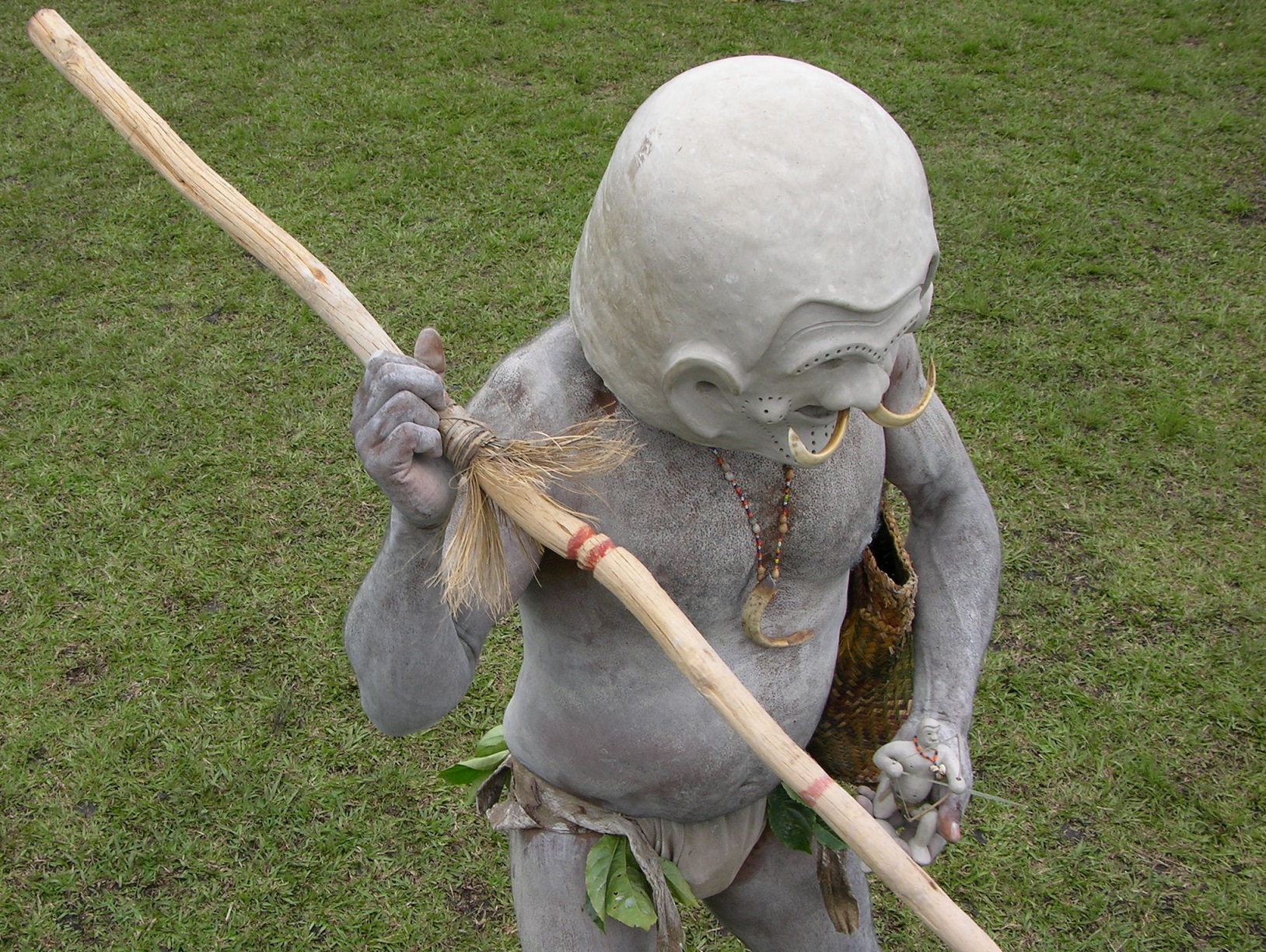 Kahunapule Michael Johnson, Flickr
Kahunapule Michael Johnson, Flickr
They Were International Curiosities
After the first Sing-Sing, everyone was curious about the mysterious Mudmen. The tribe skyrocketed to fame, and were featured in ads for soda, perfume, and cars.
The band Pink Floyd even made a song about them.
Still Popular
Tourism to the Goroka Show peaked in the 1970s, but many travelers still flock to see the Mudmen every year.
In addition to witnessing their haunting dance, you can book a tour to visit nearby Asaro villages.
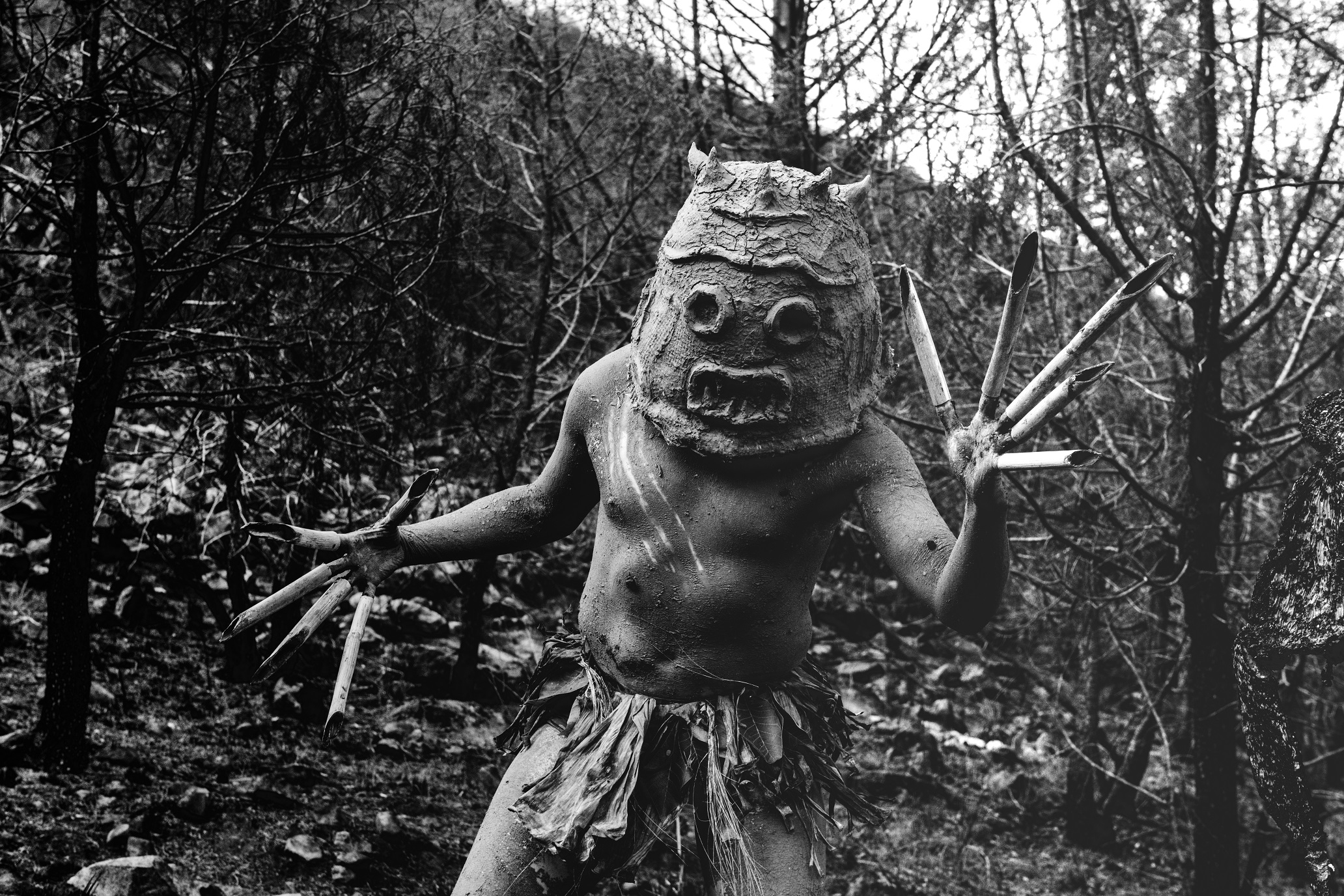 Charles Varillas 1, Shutterstock
Charles Varillas 1, Shutterstock
Final Thoughts
The Asaro have become one of the world's most beloved tribes, and thousands of people still flock to see them perform in their iconic mud masks.
While many Asaro have embraced a modern lifestyle that's very different from their ancestors, the dance of the Mudmen is one tradition that will continue to enchant locals and travelers alike for years to come.

